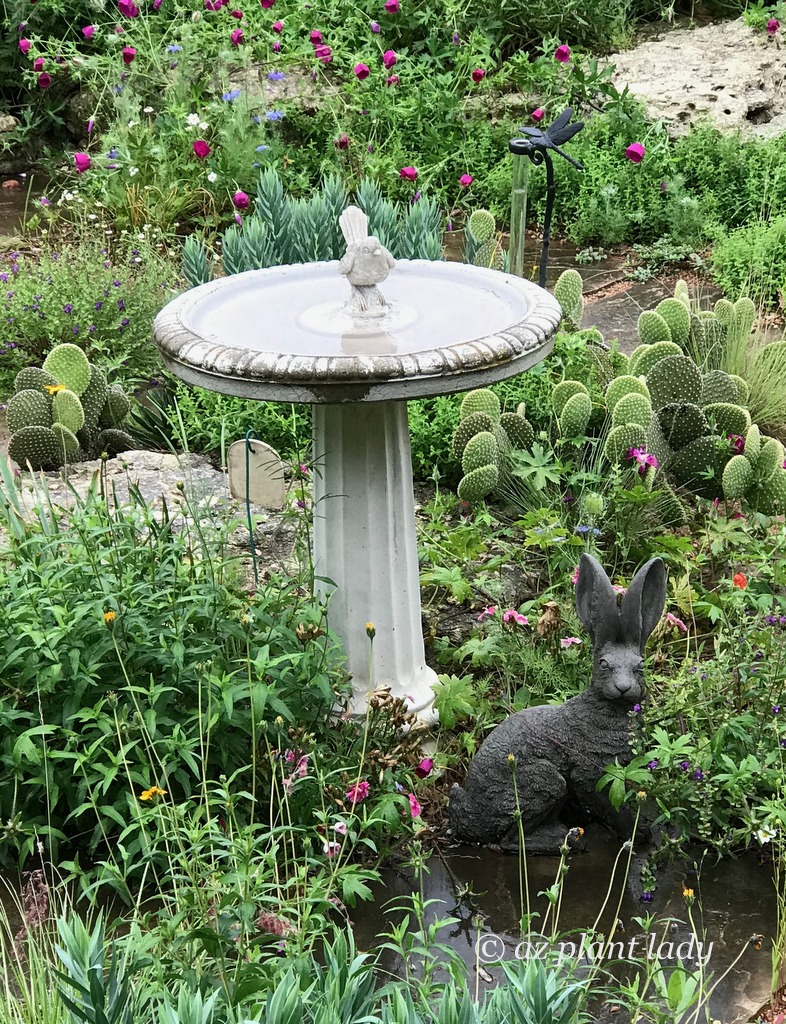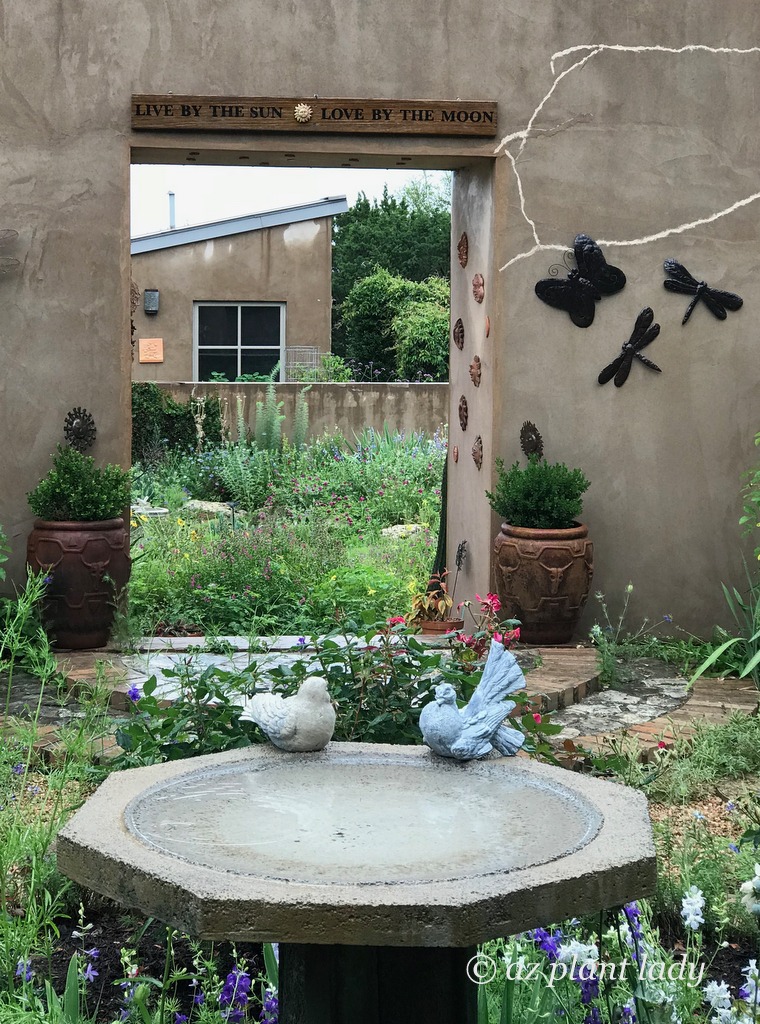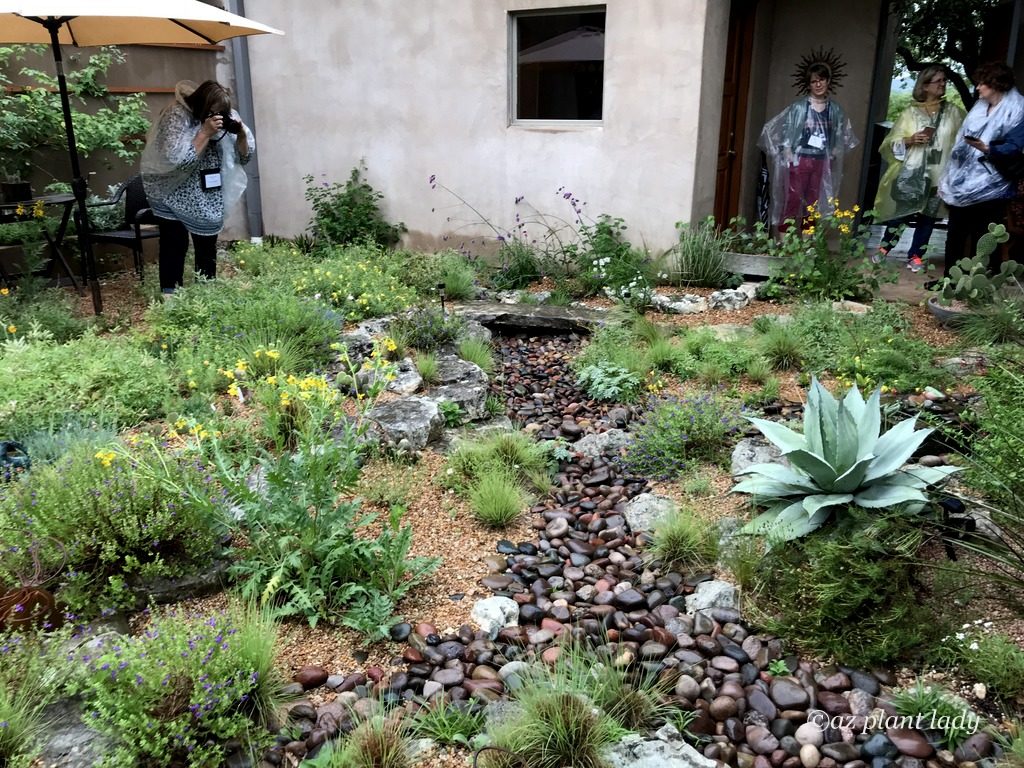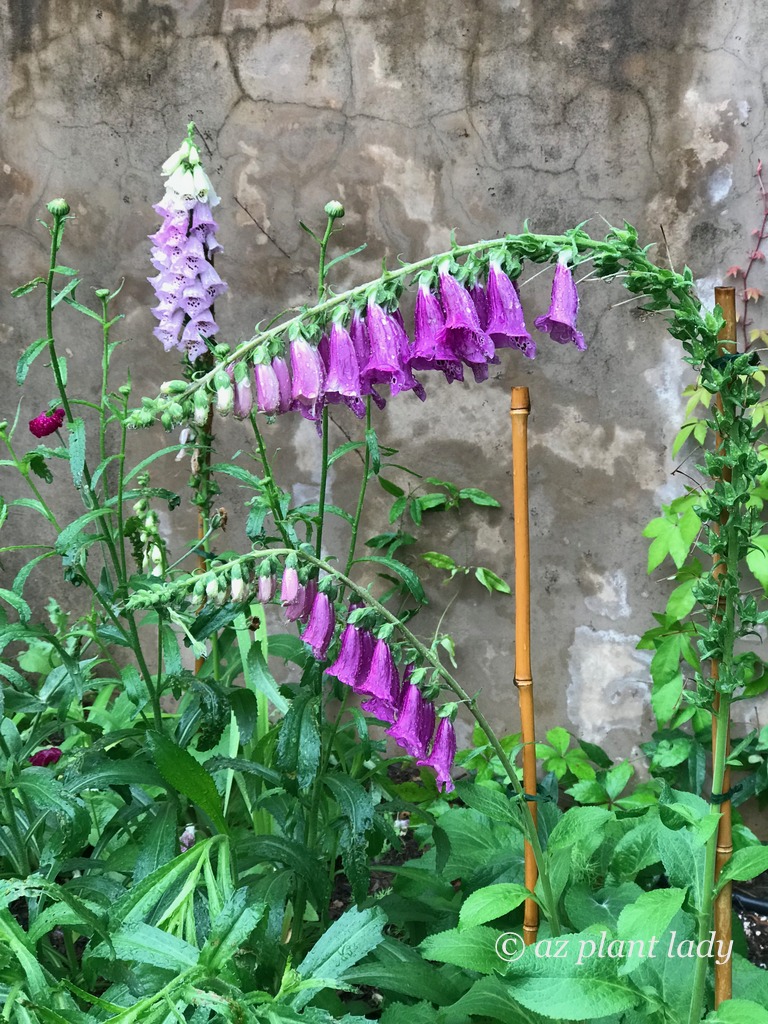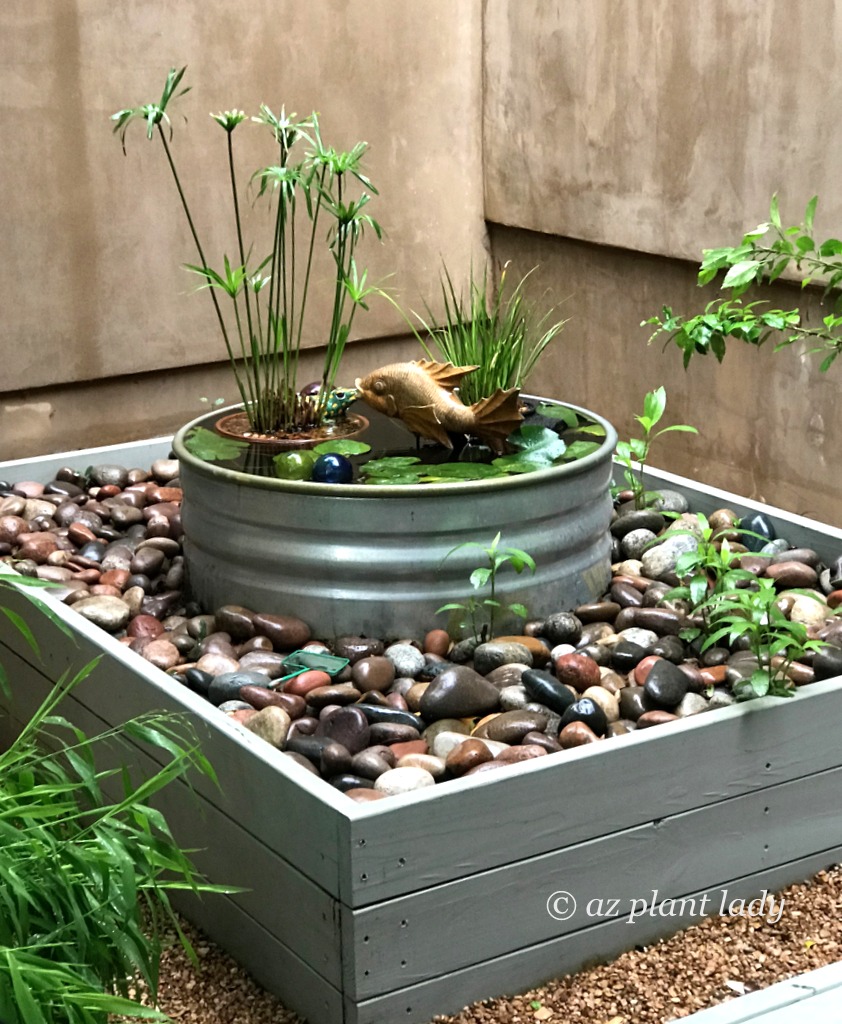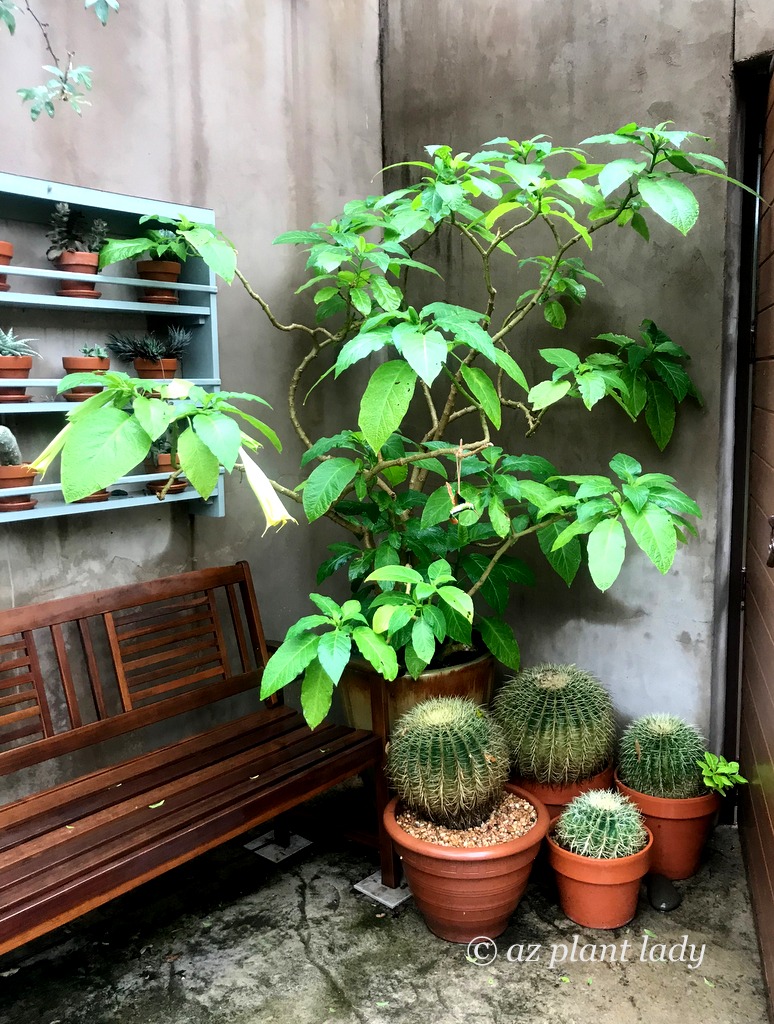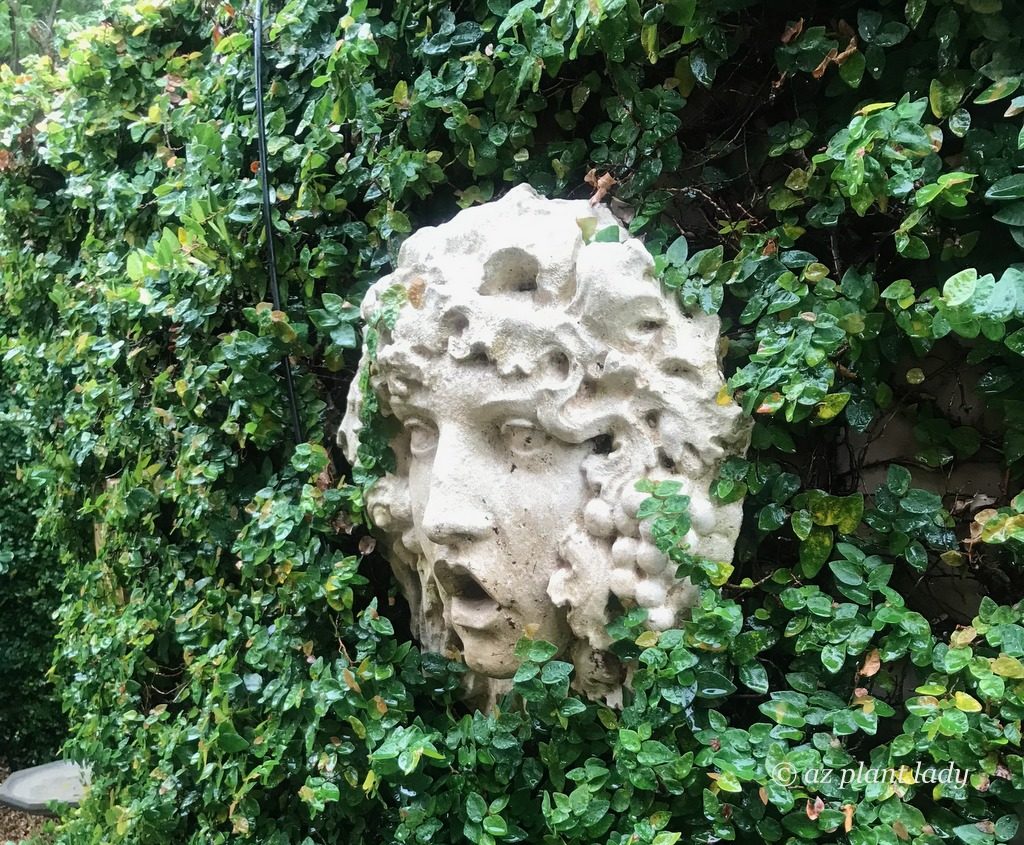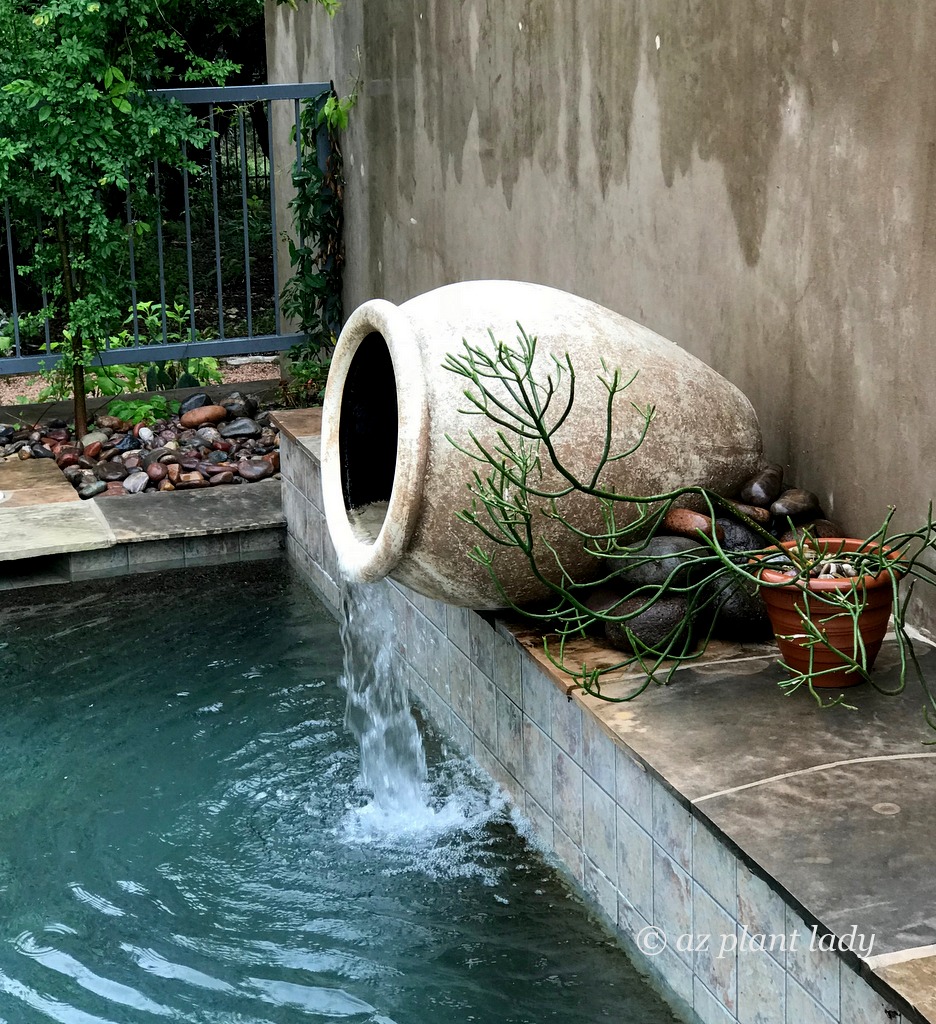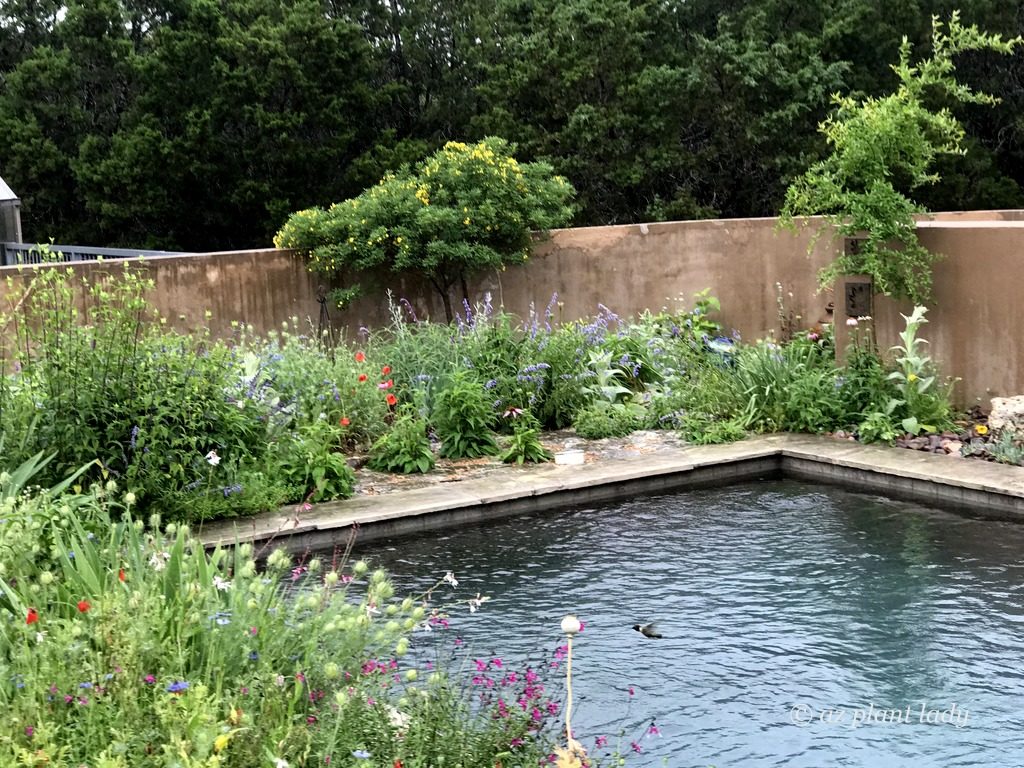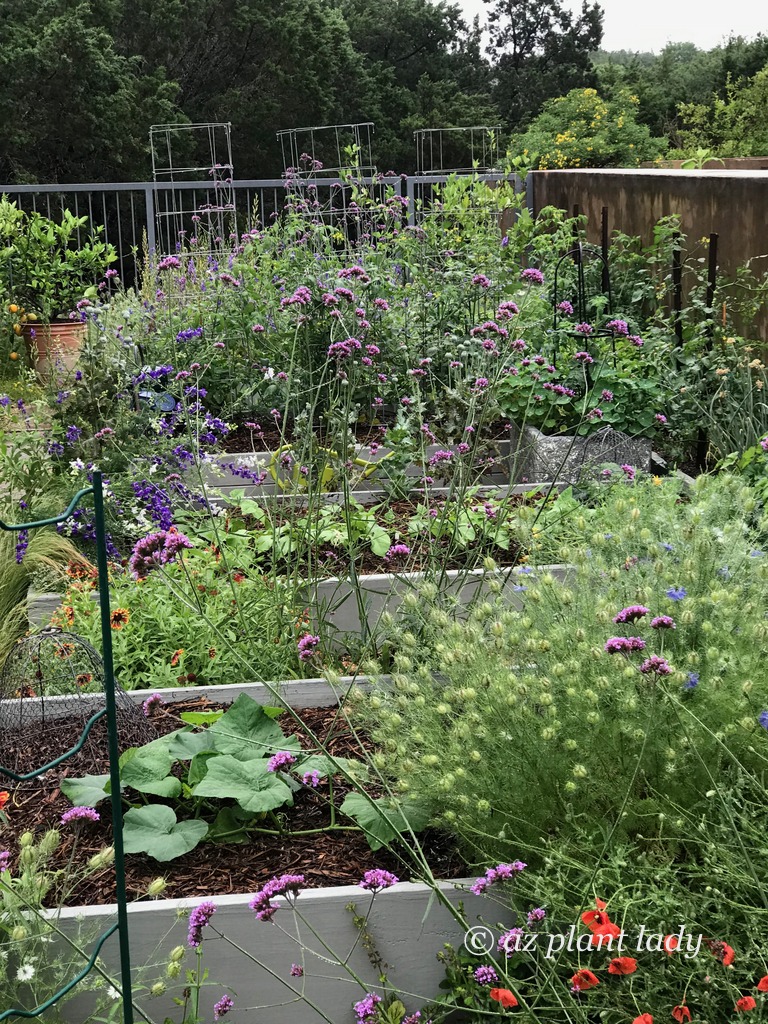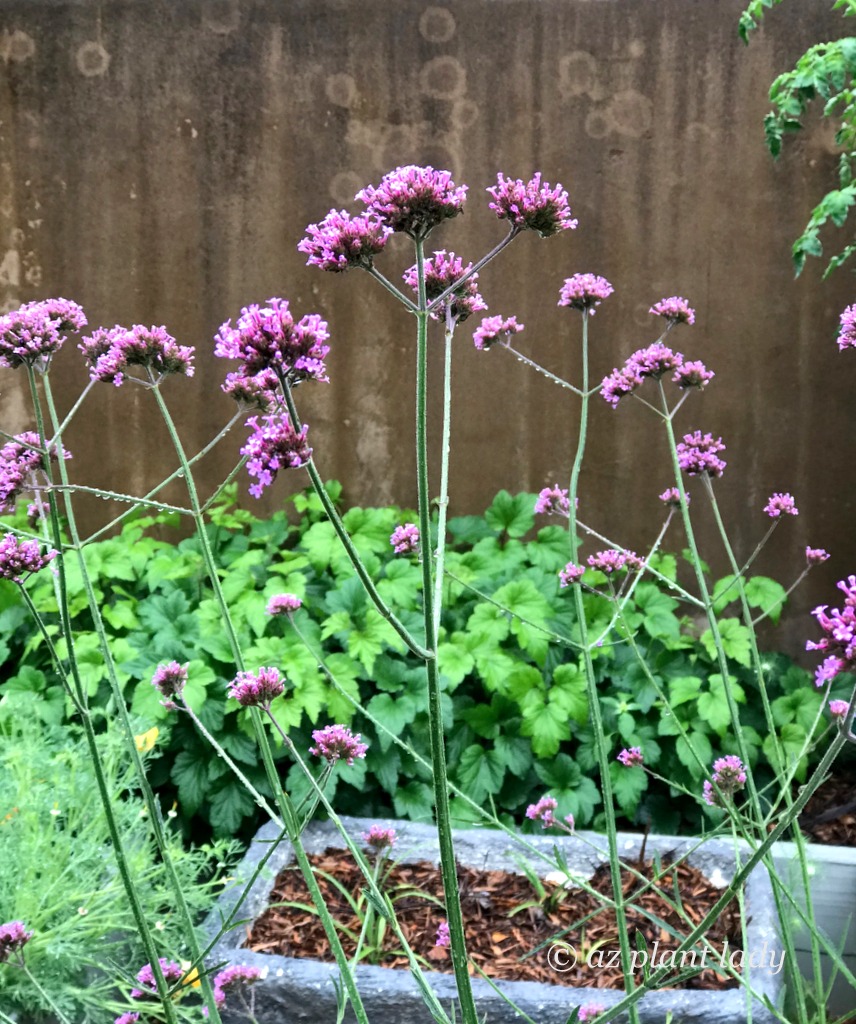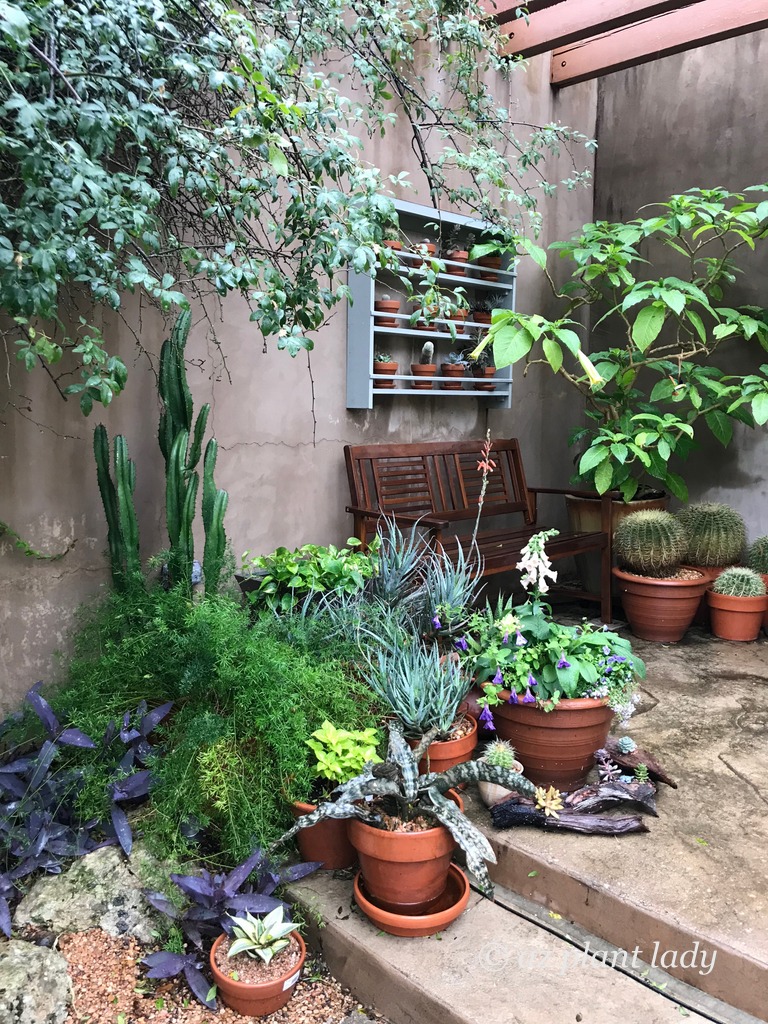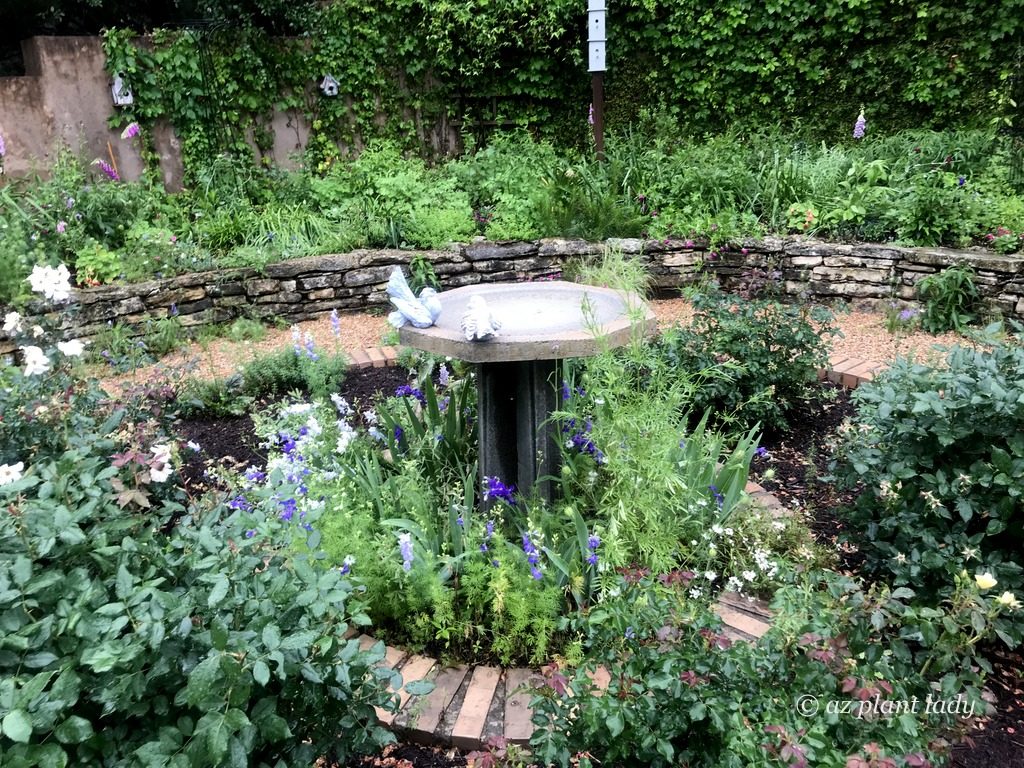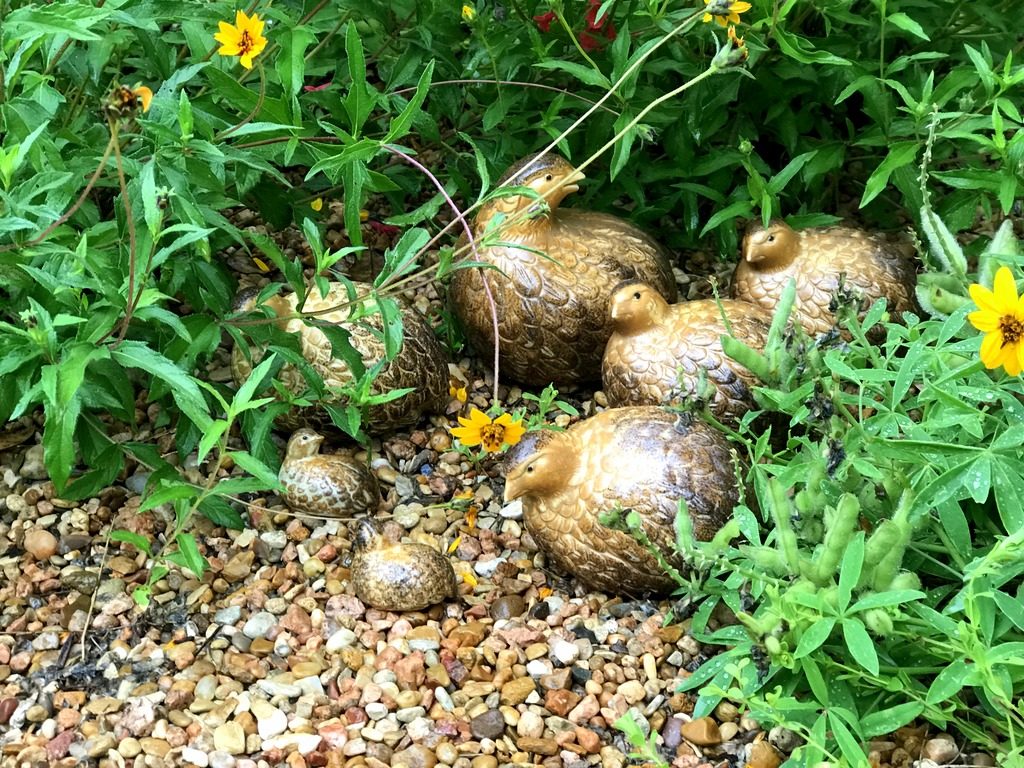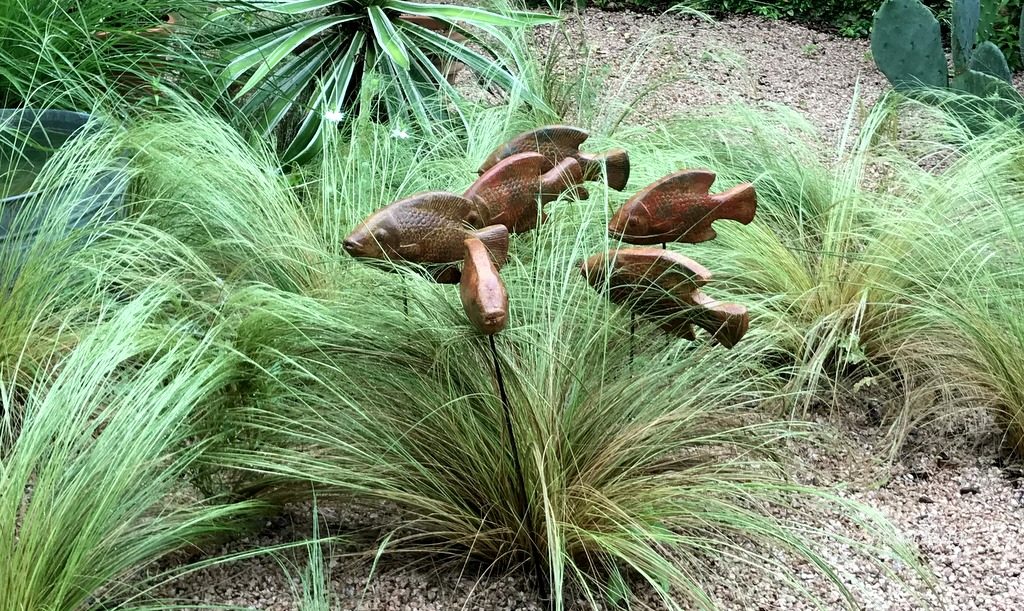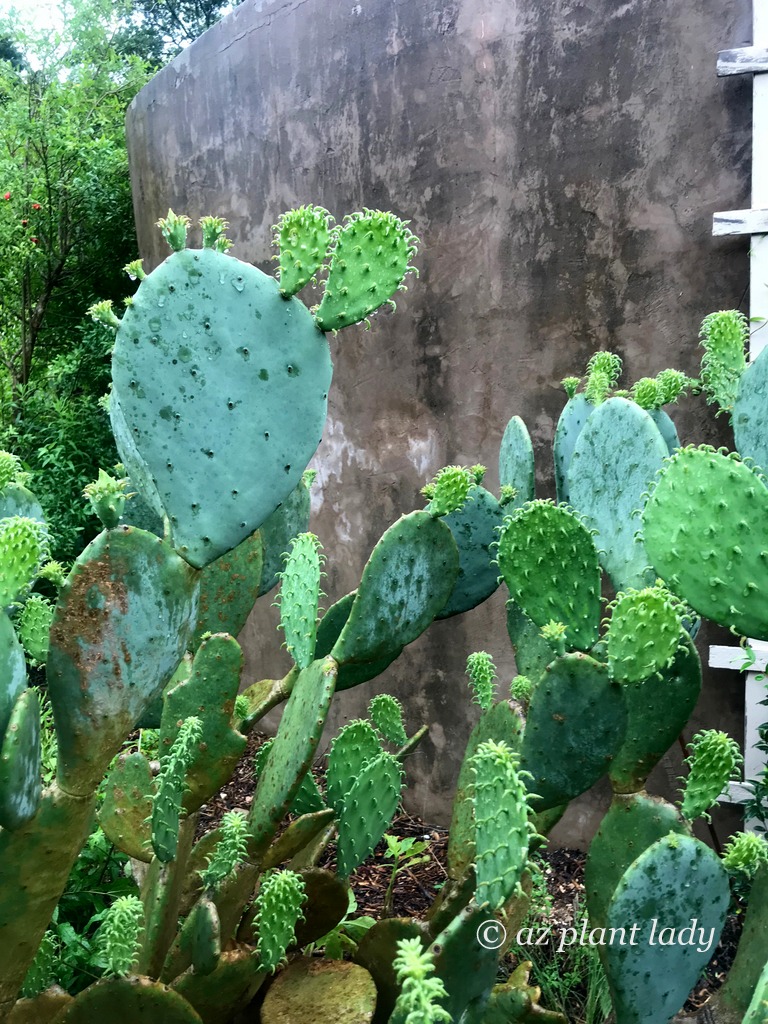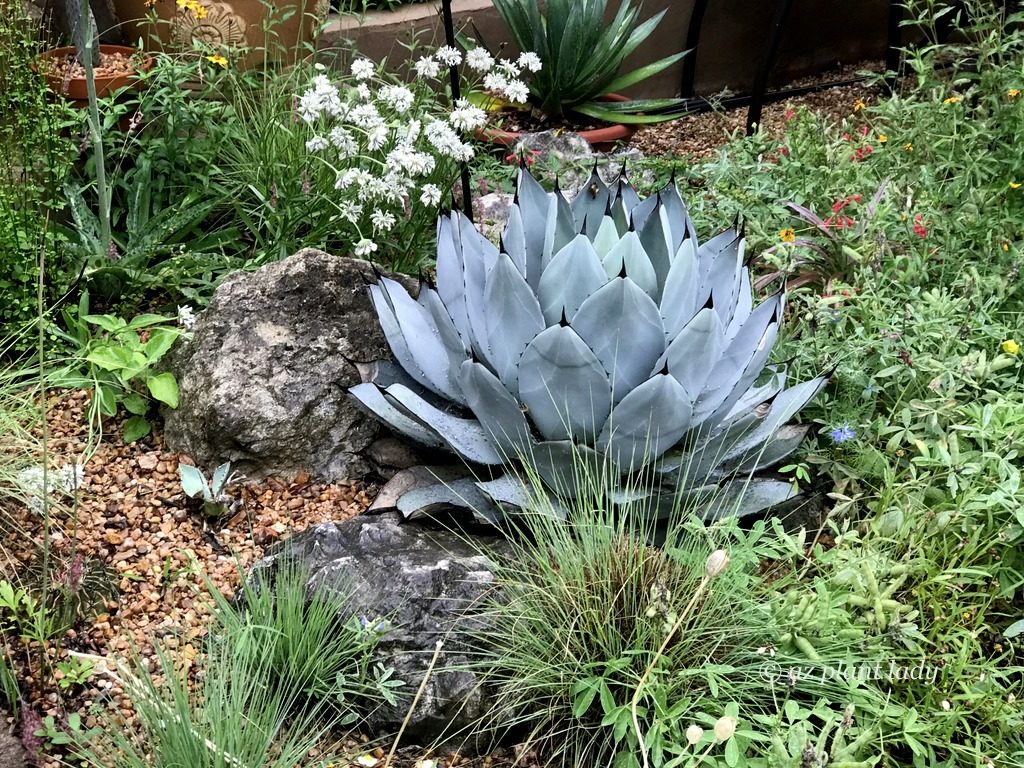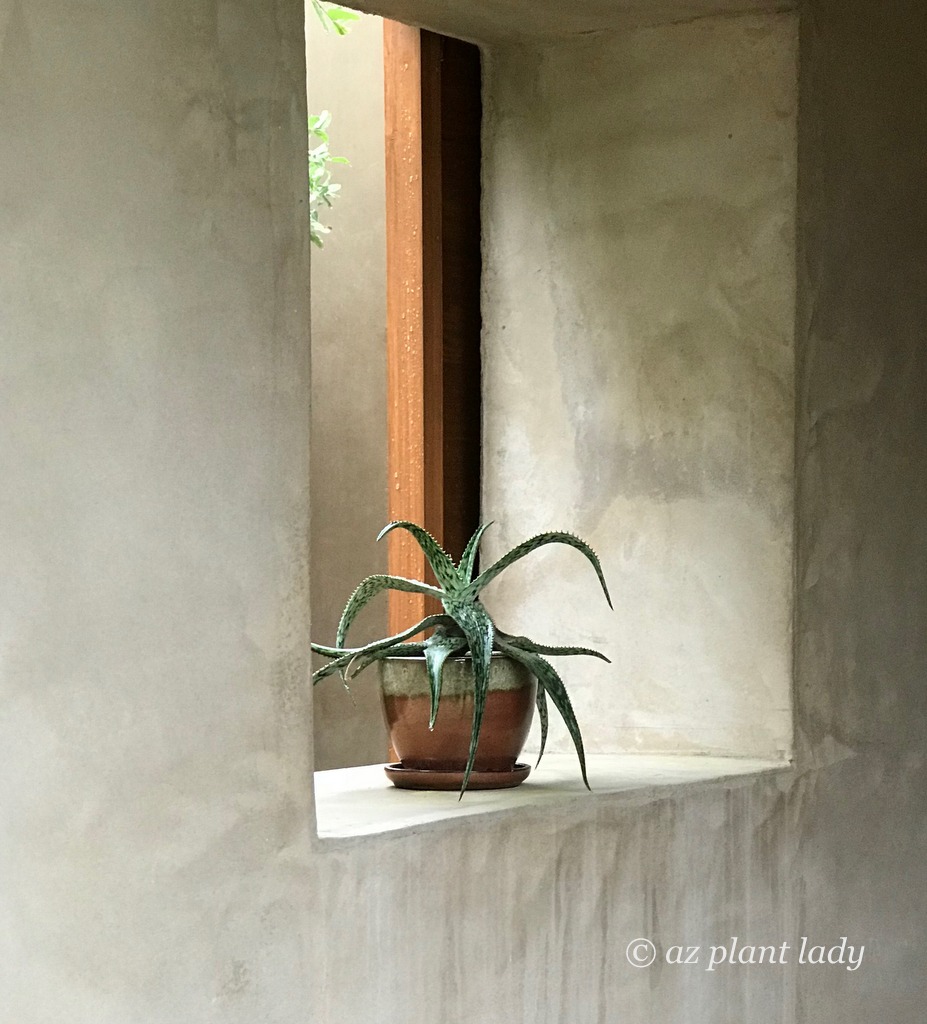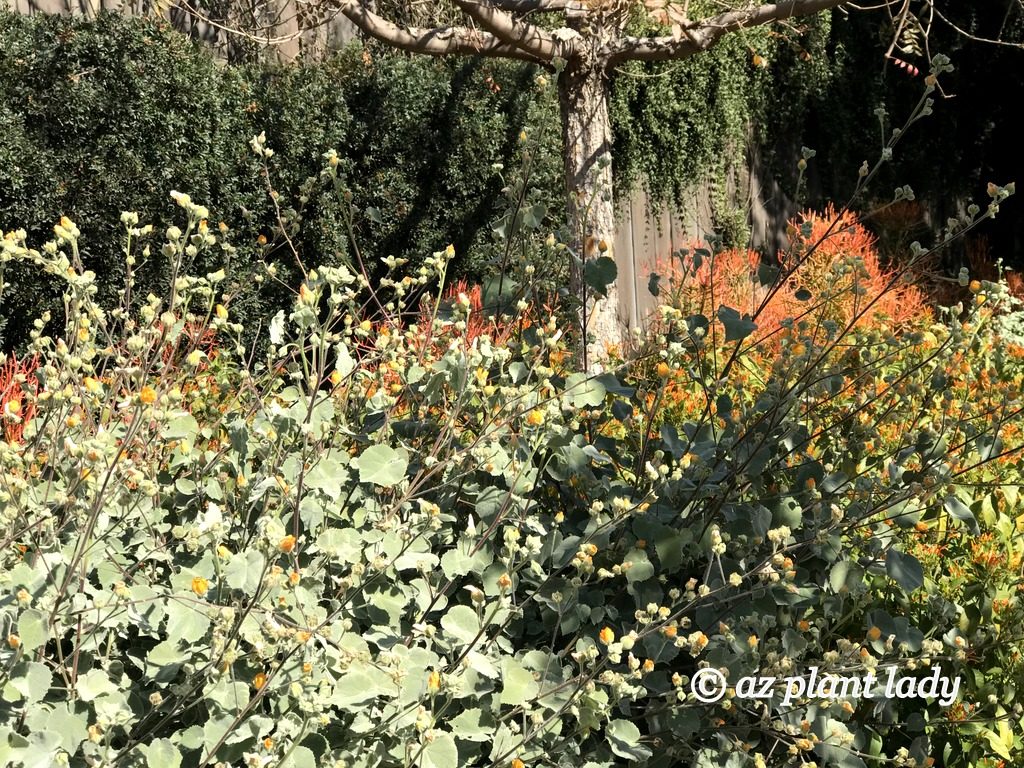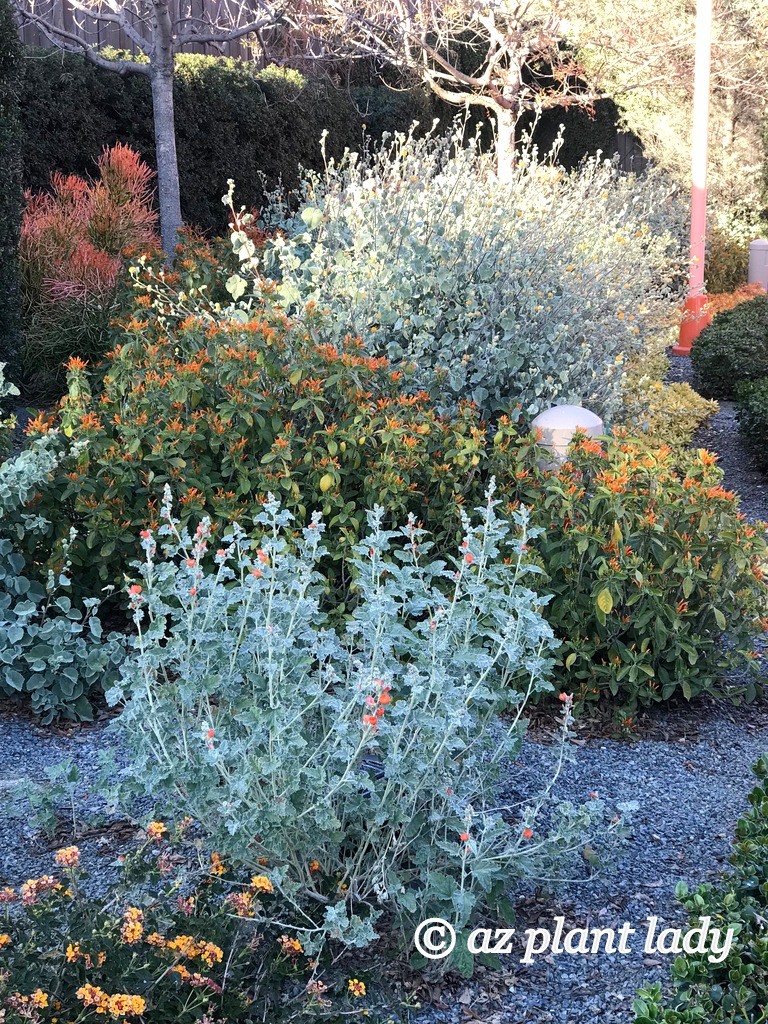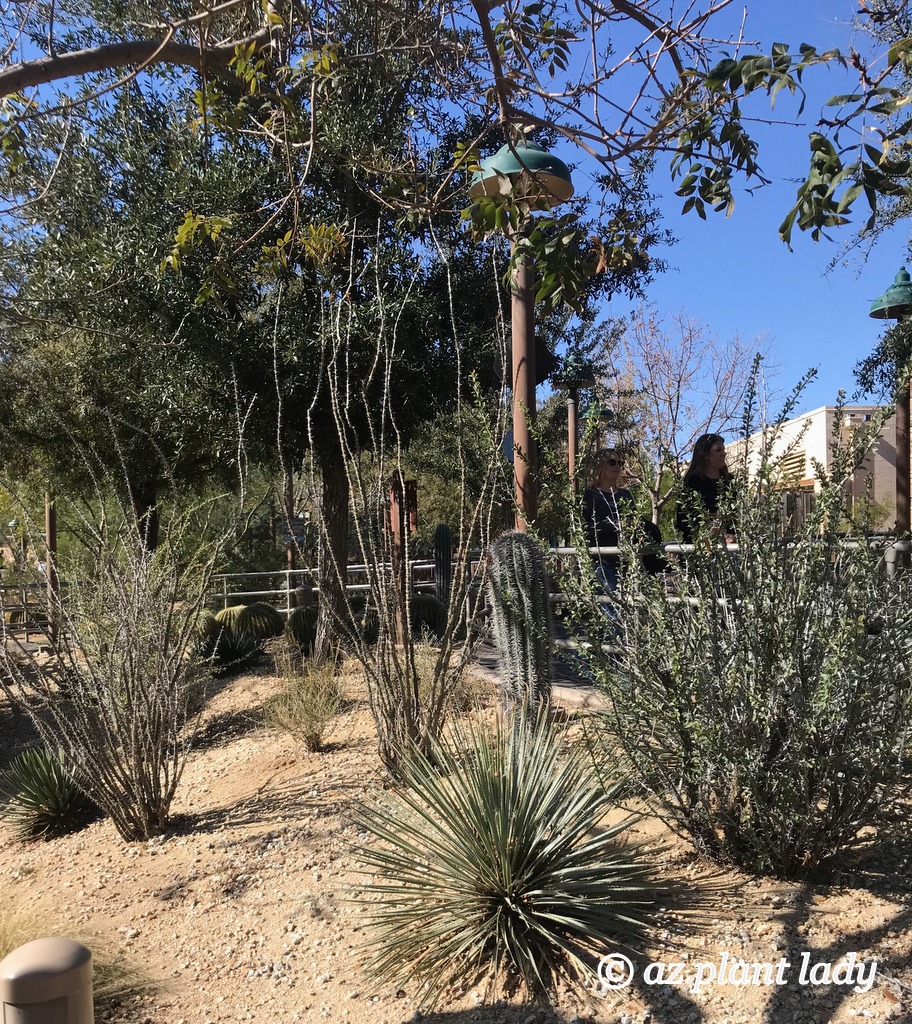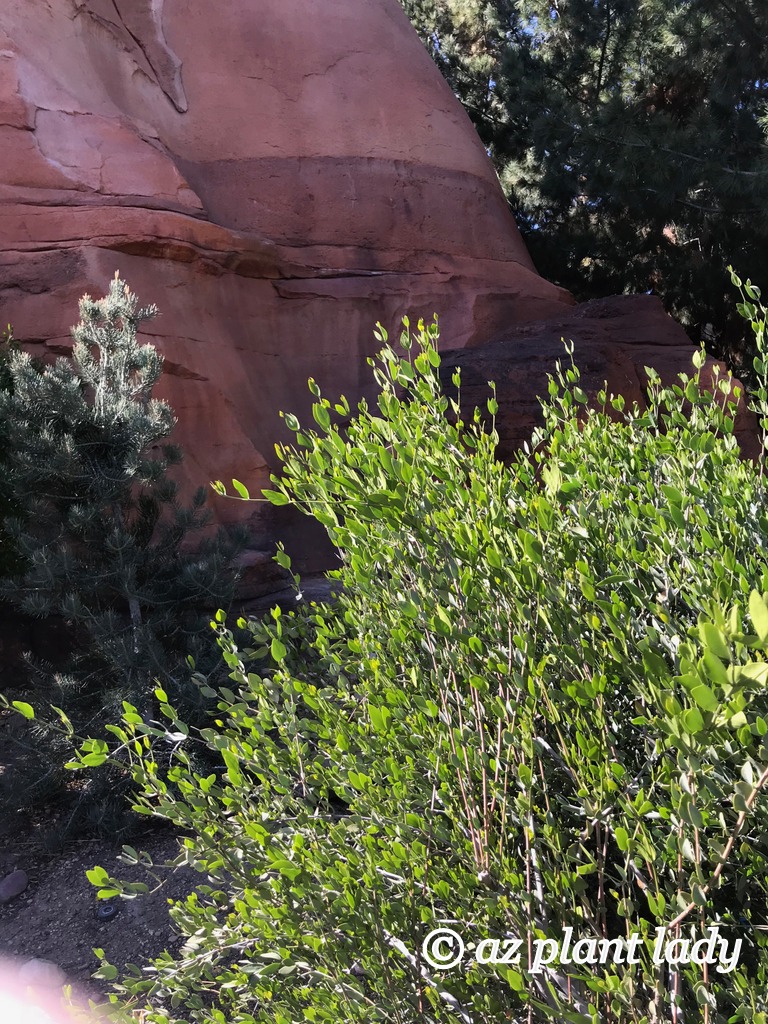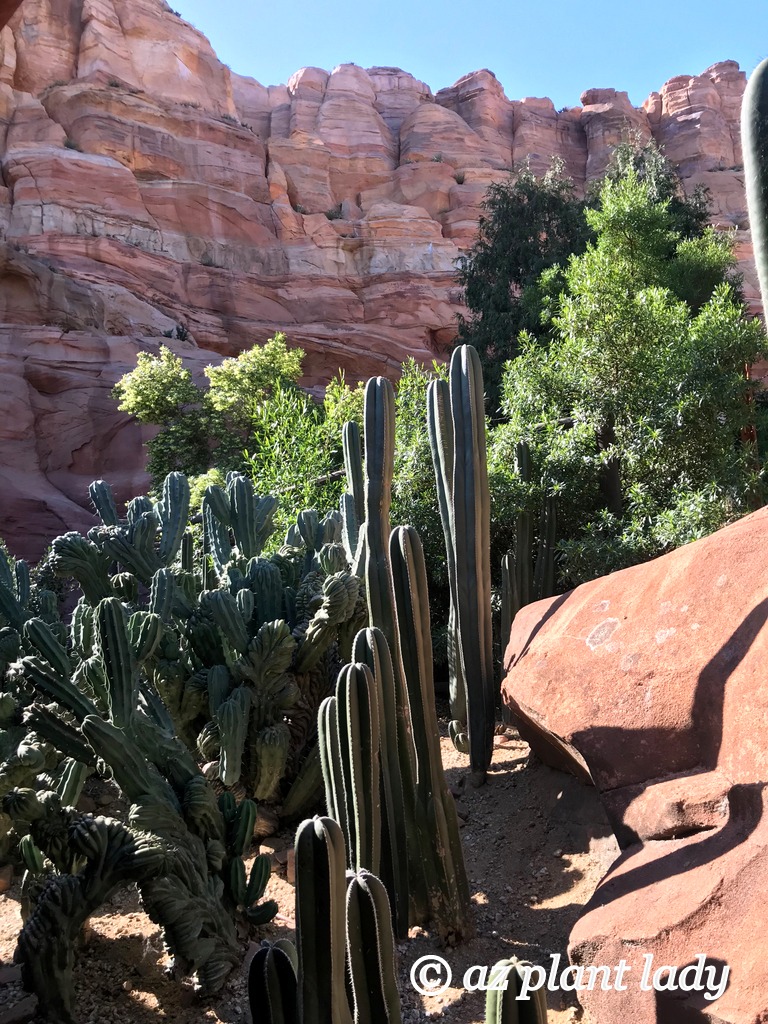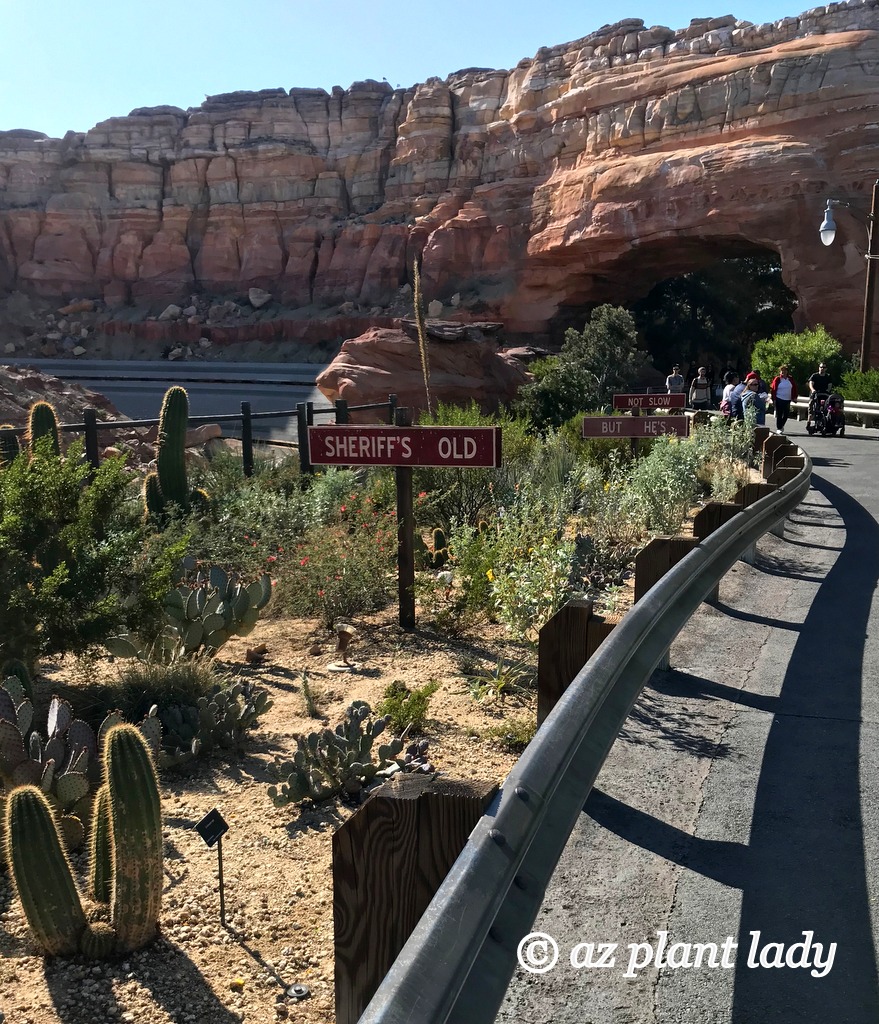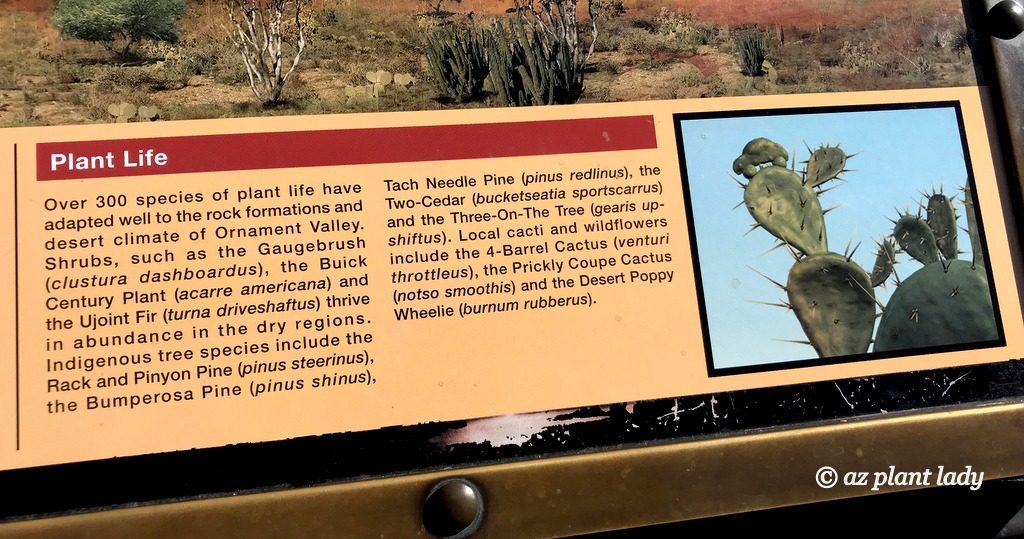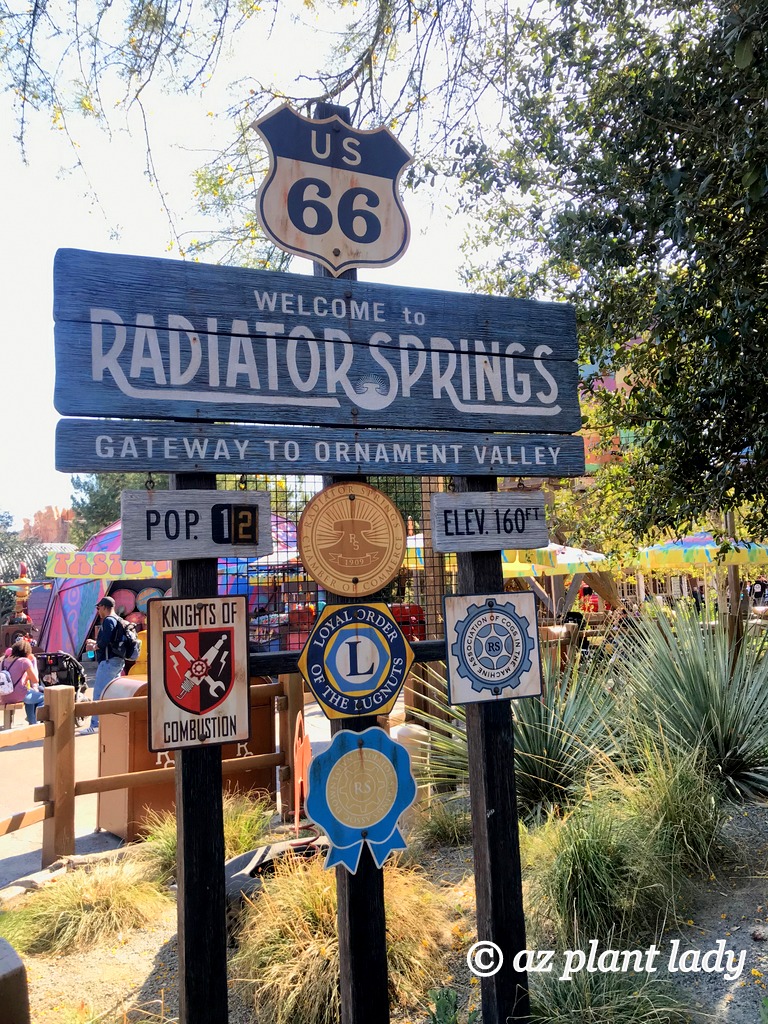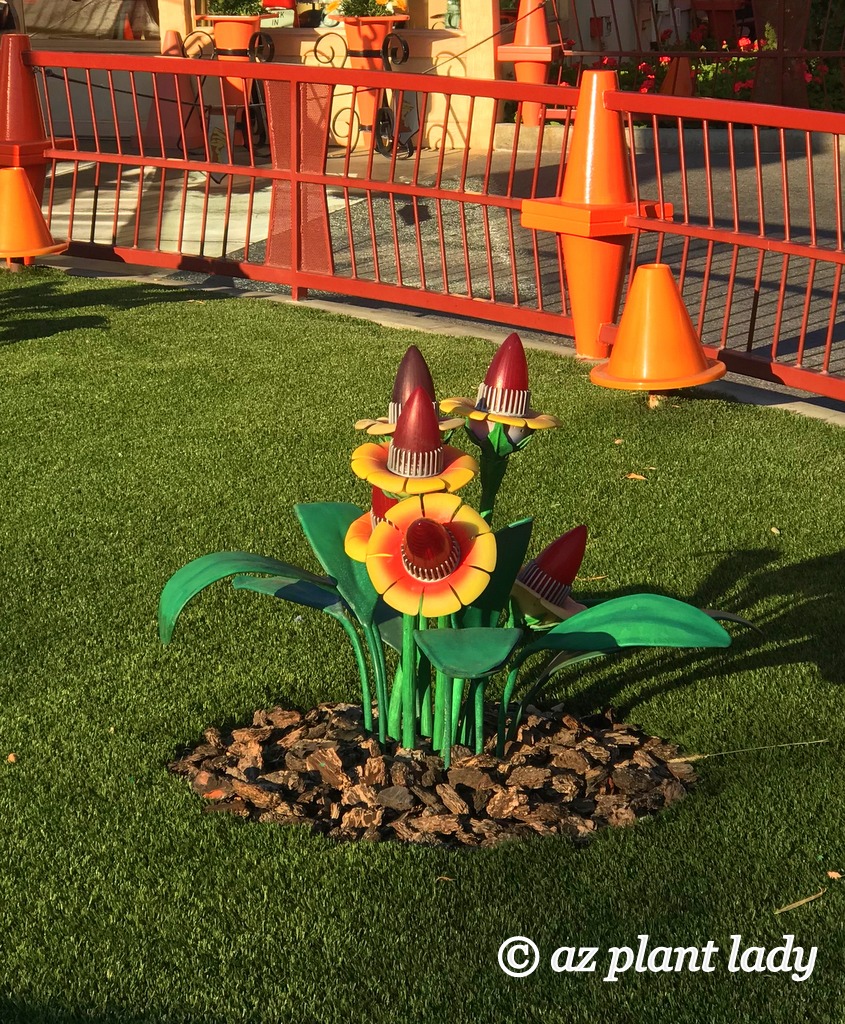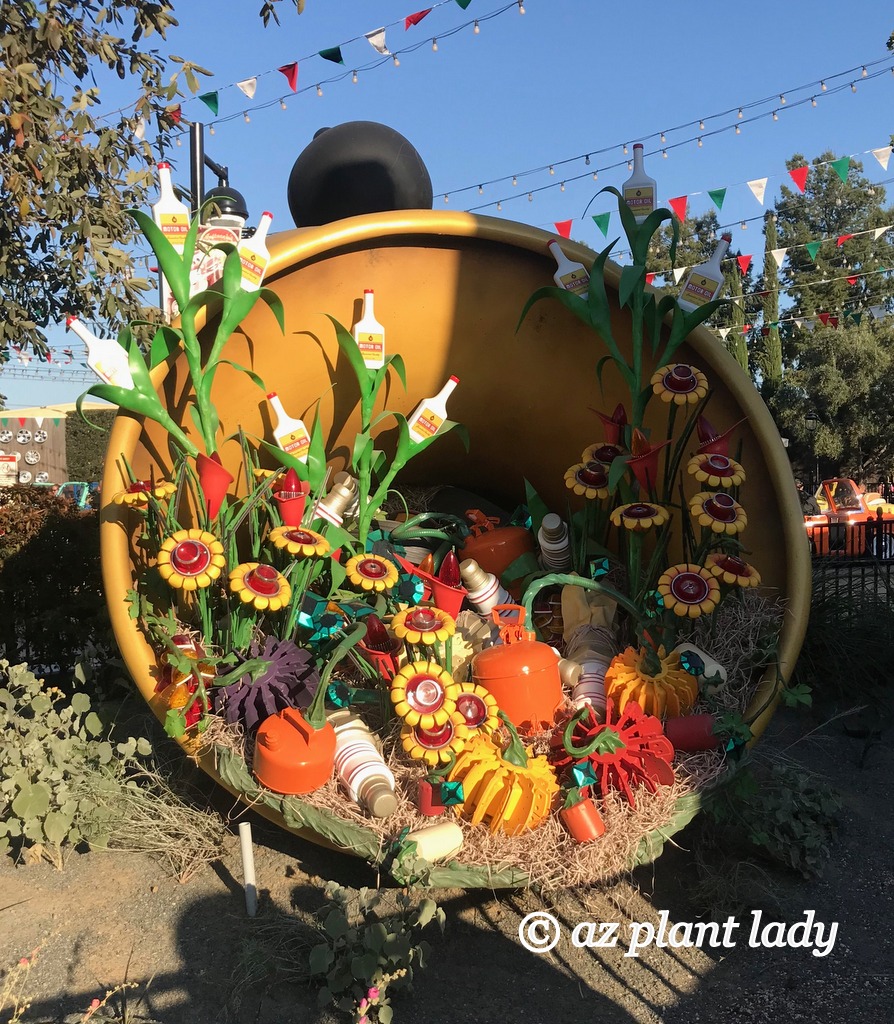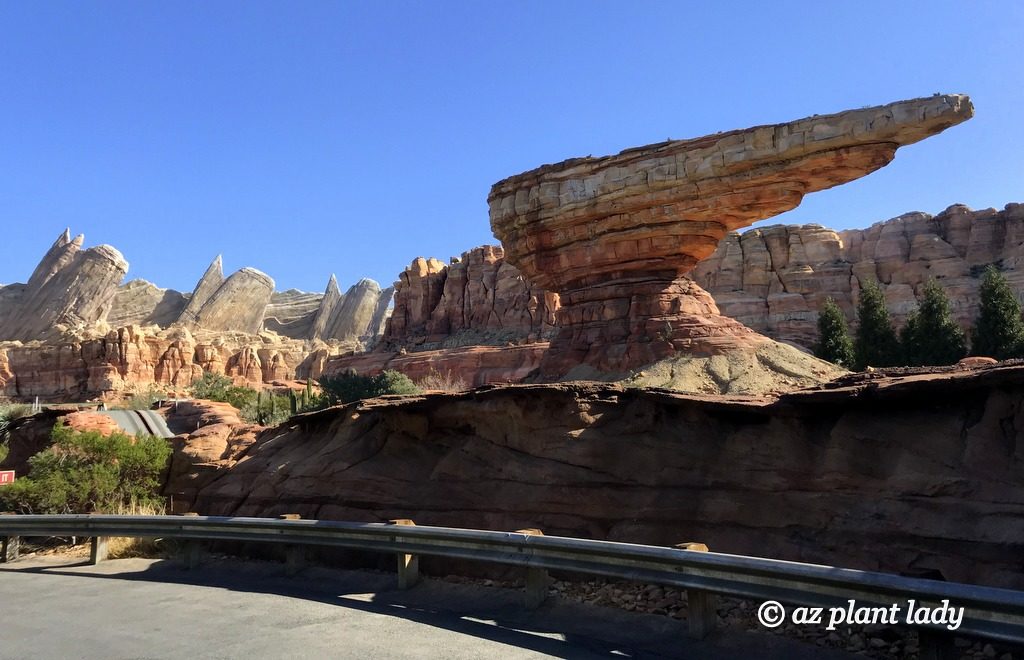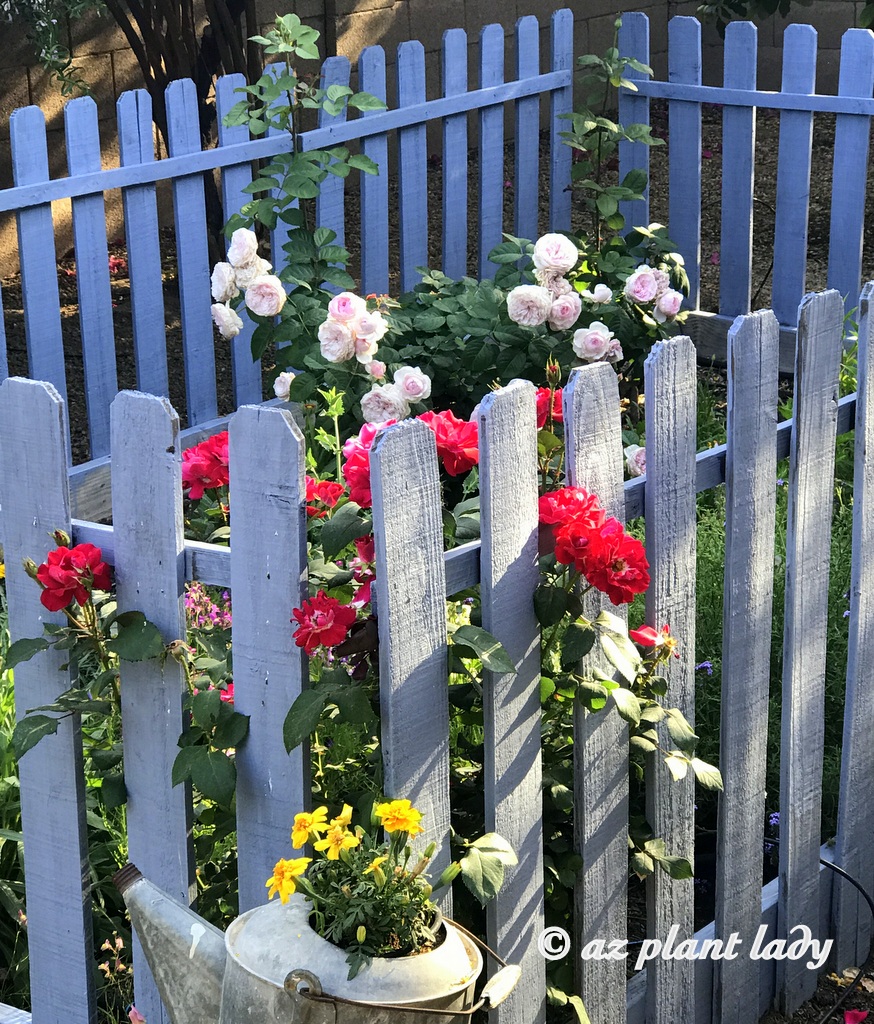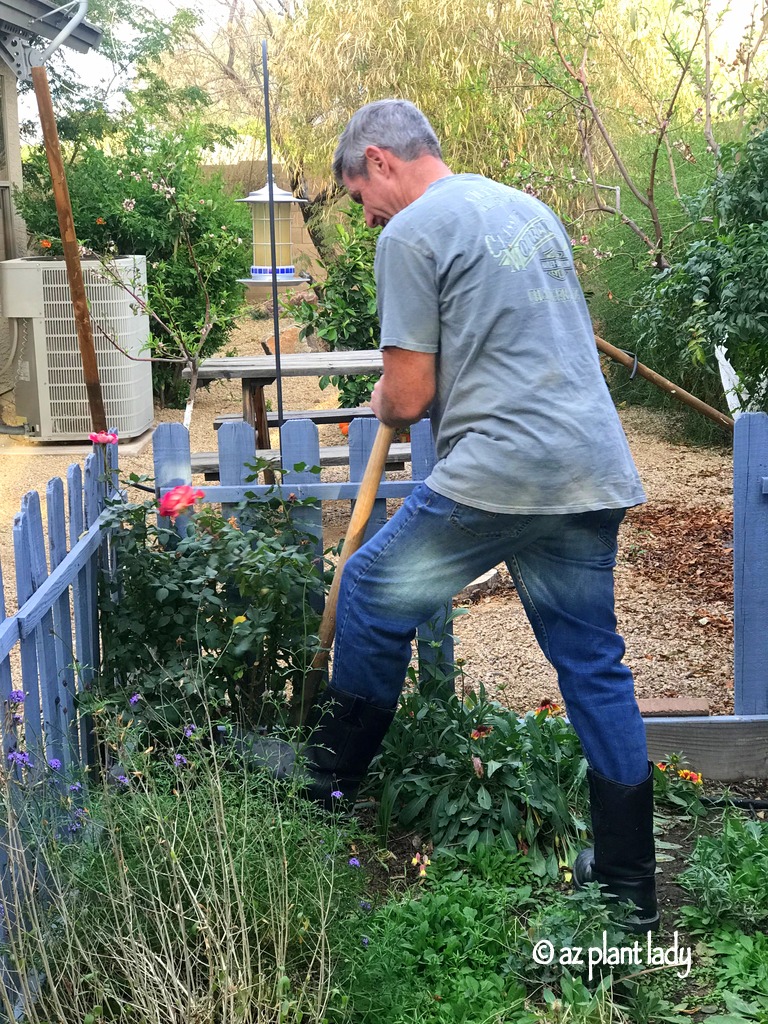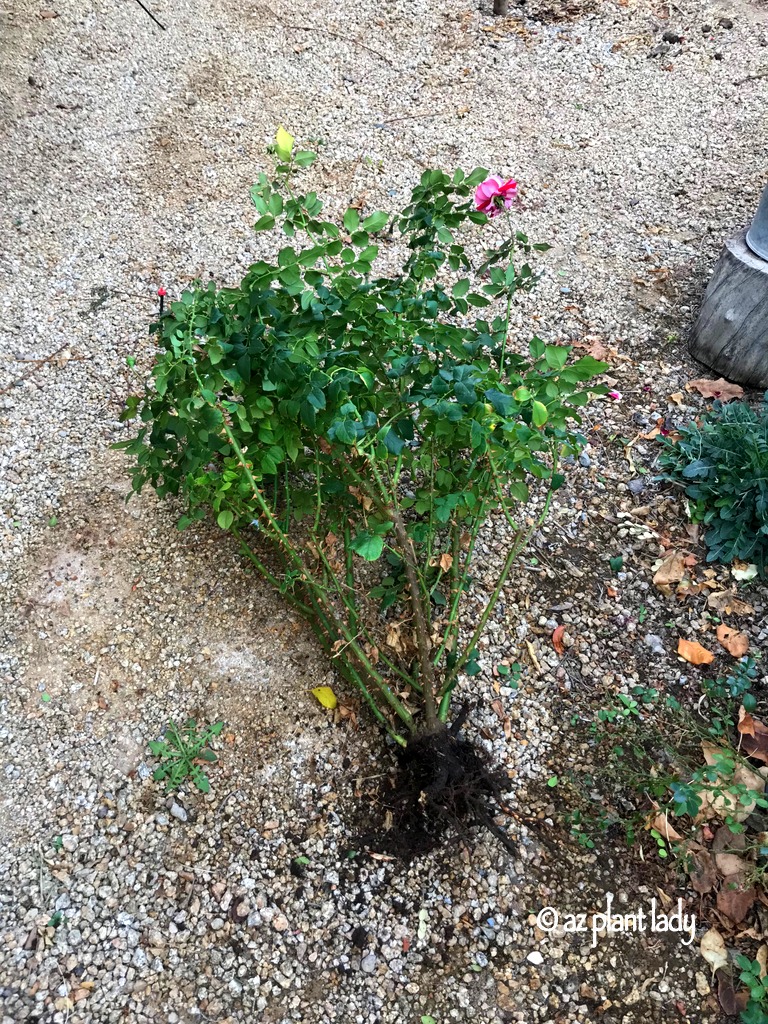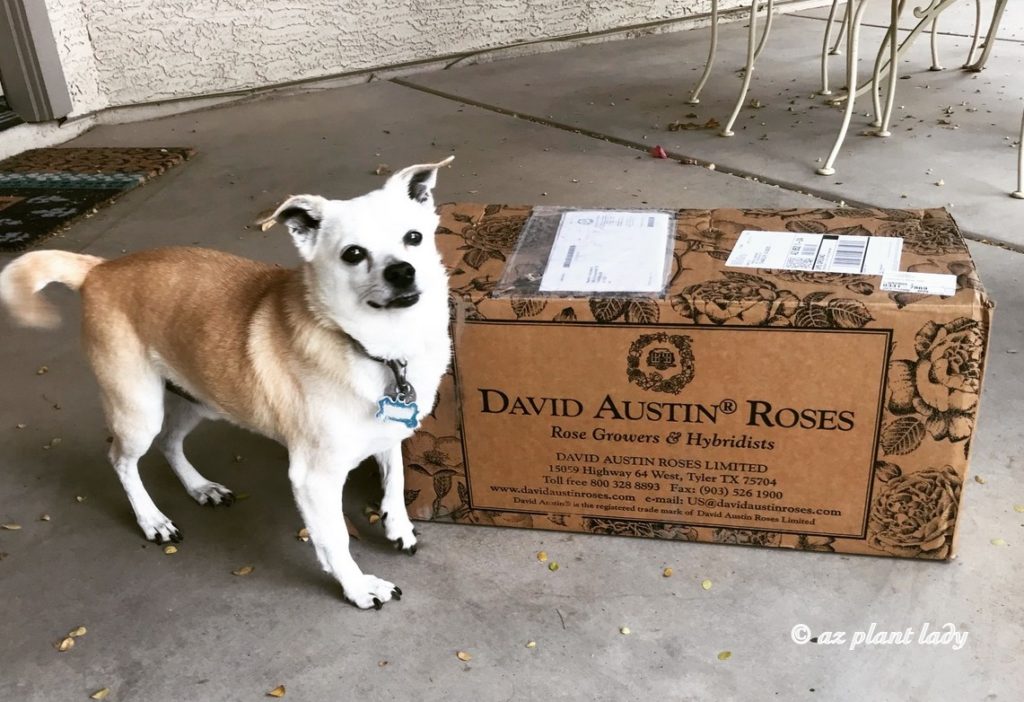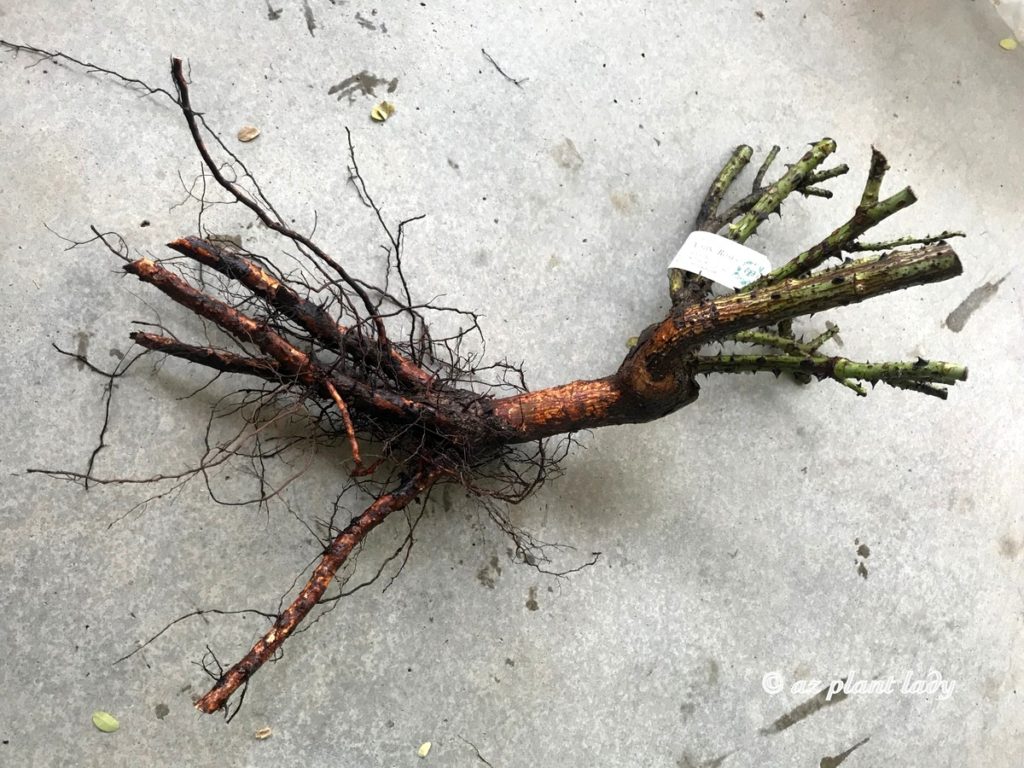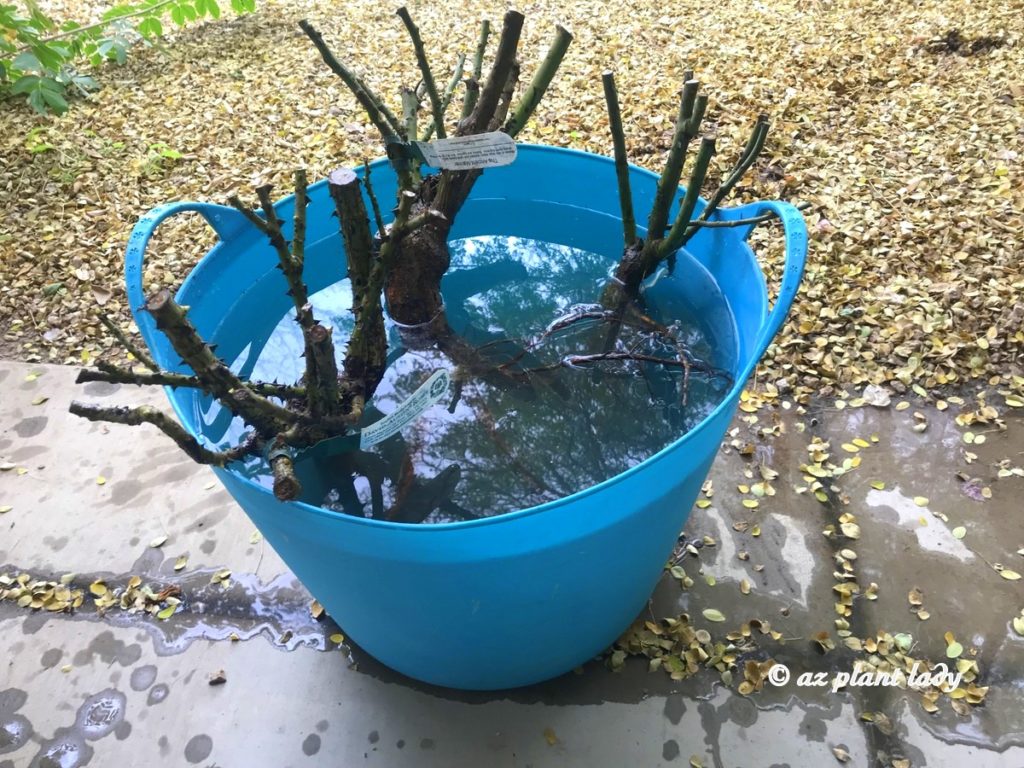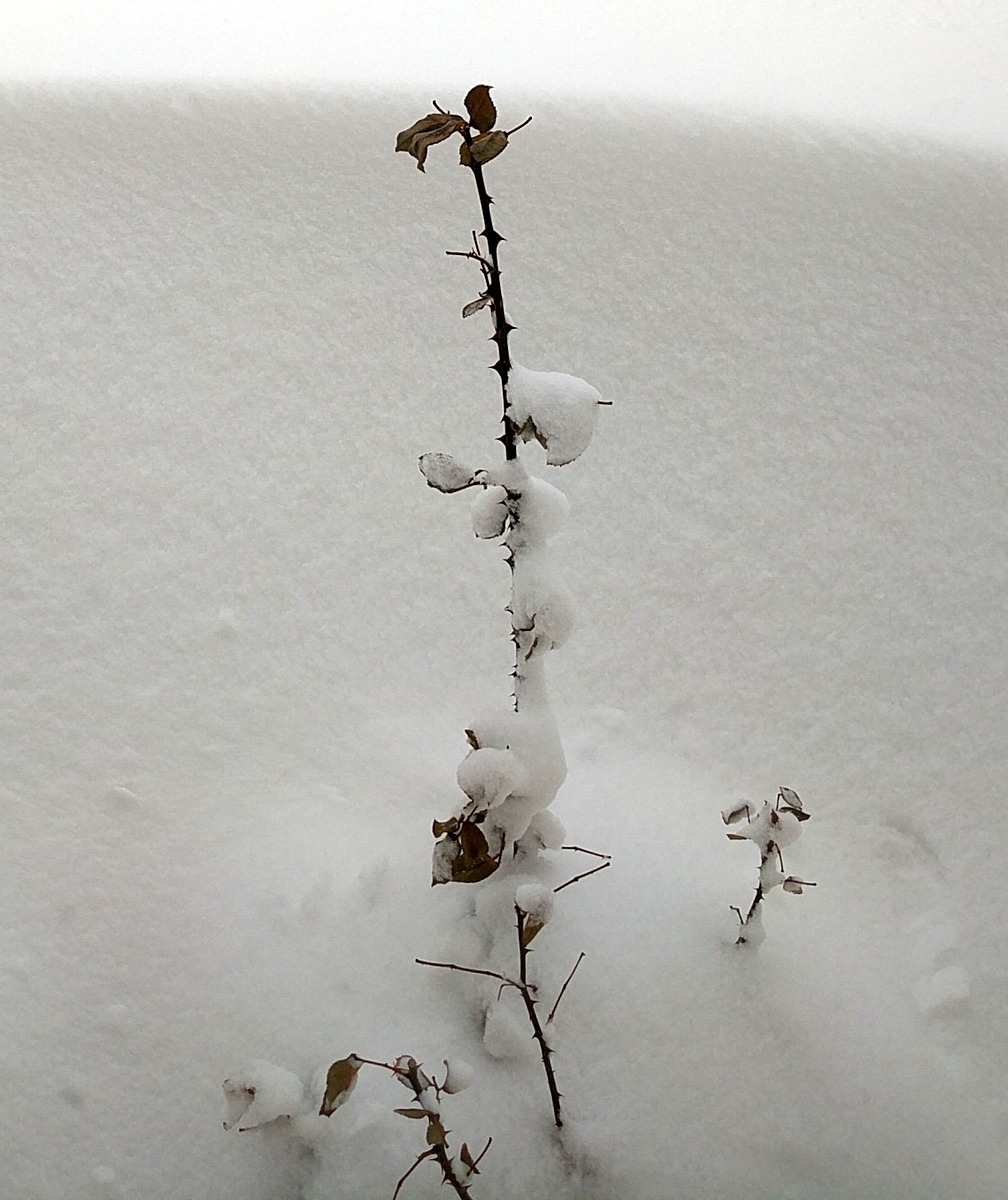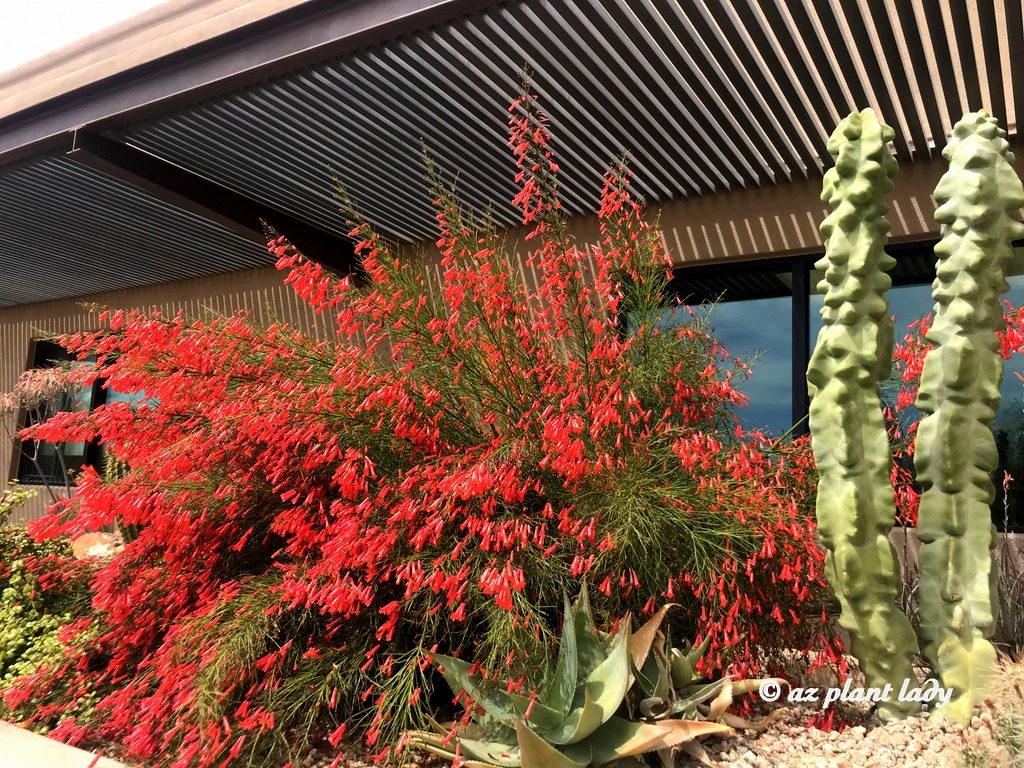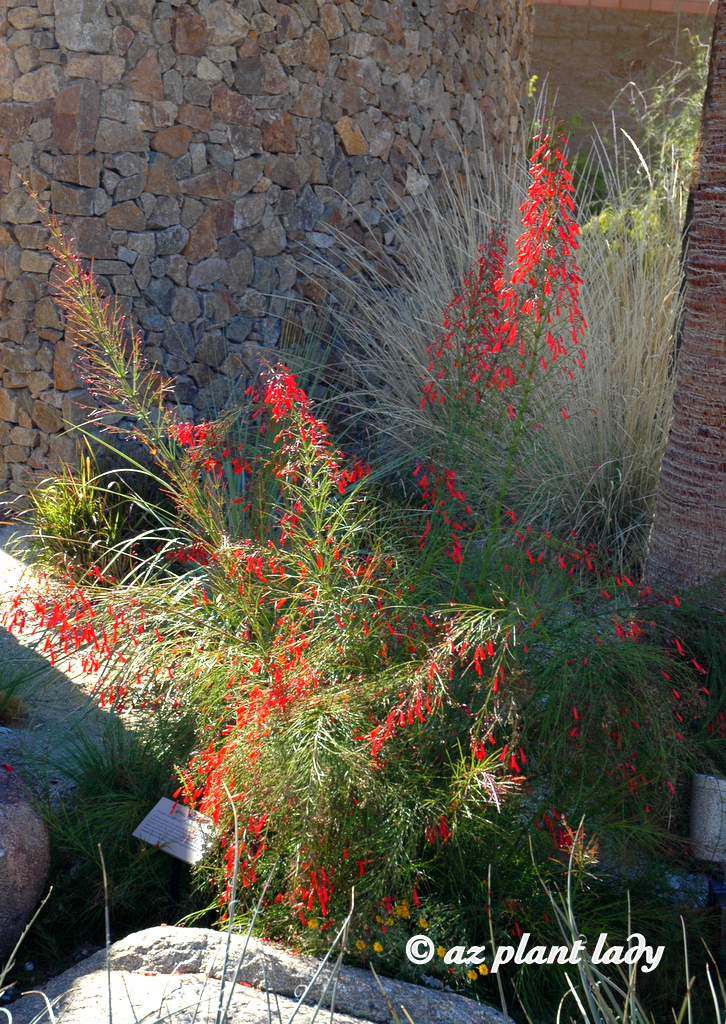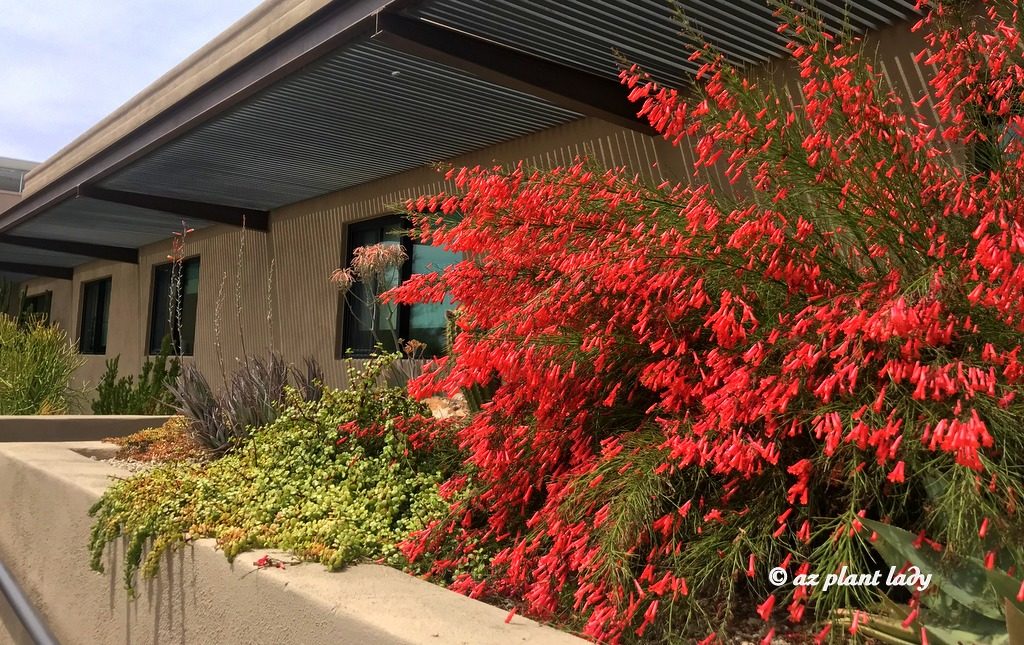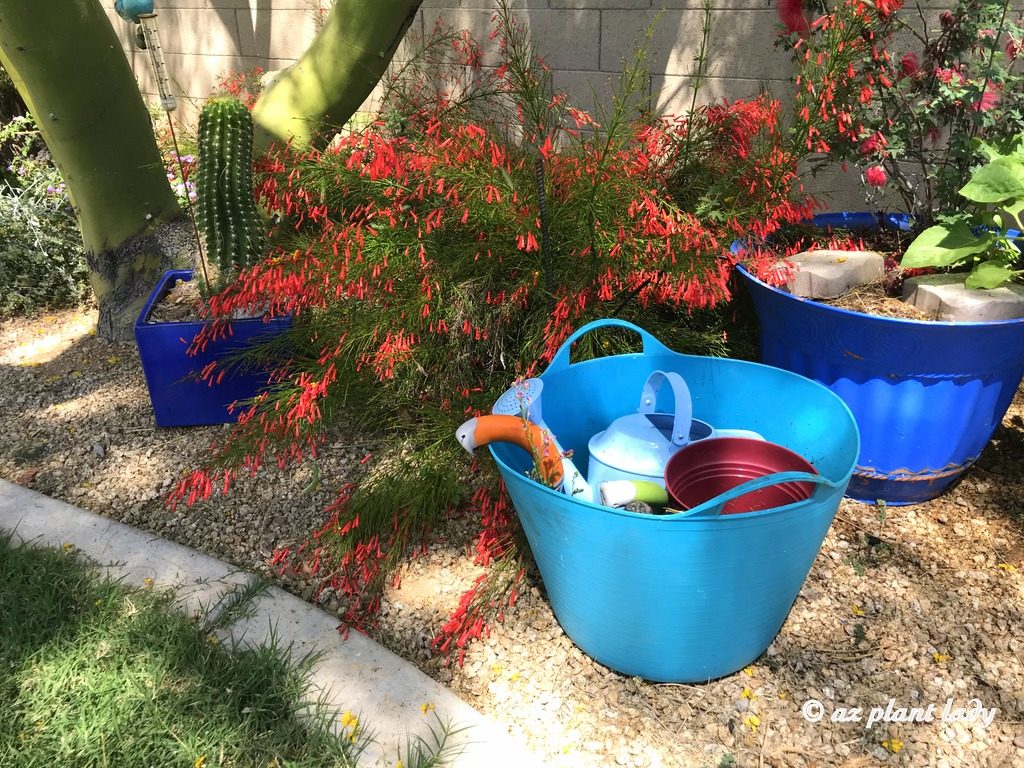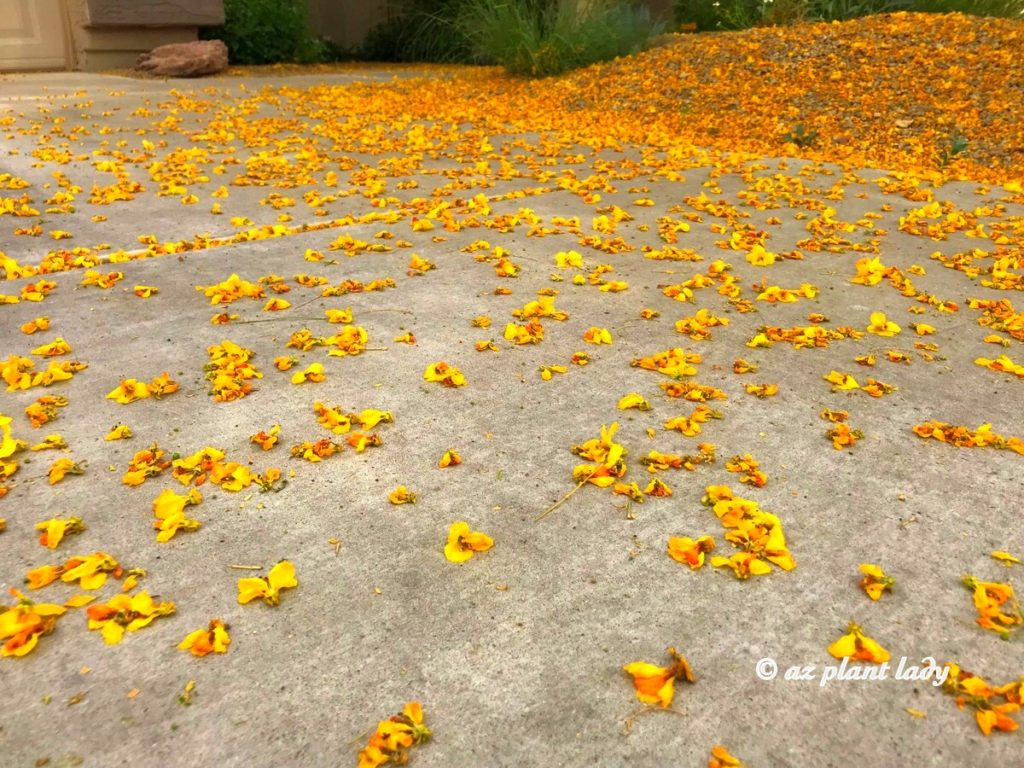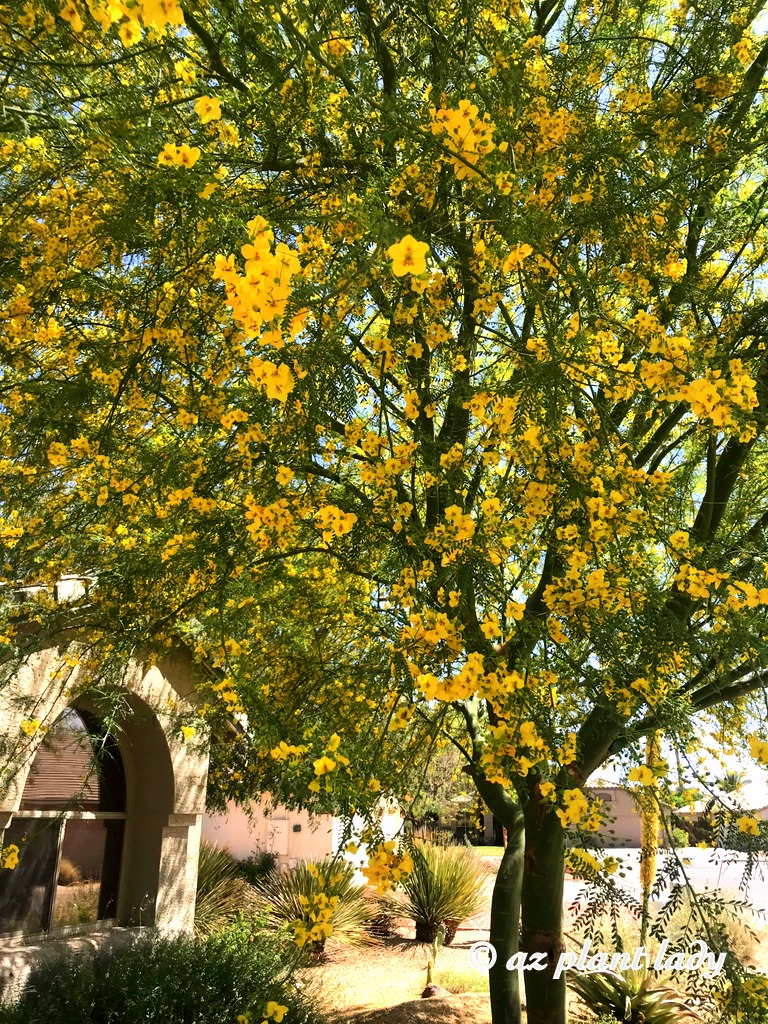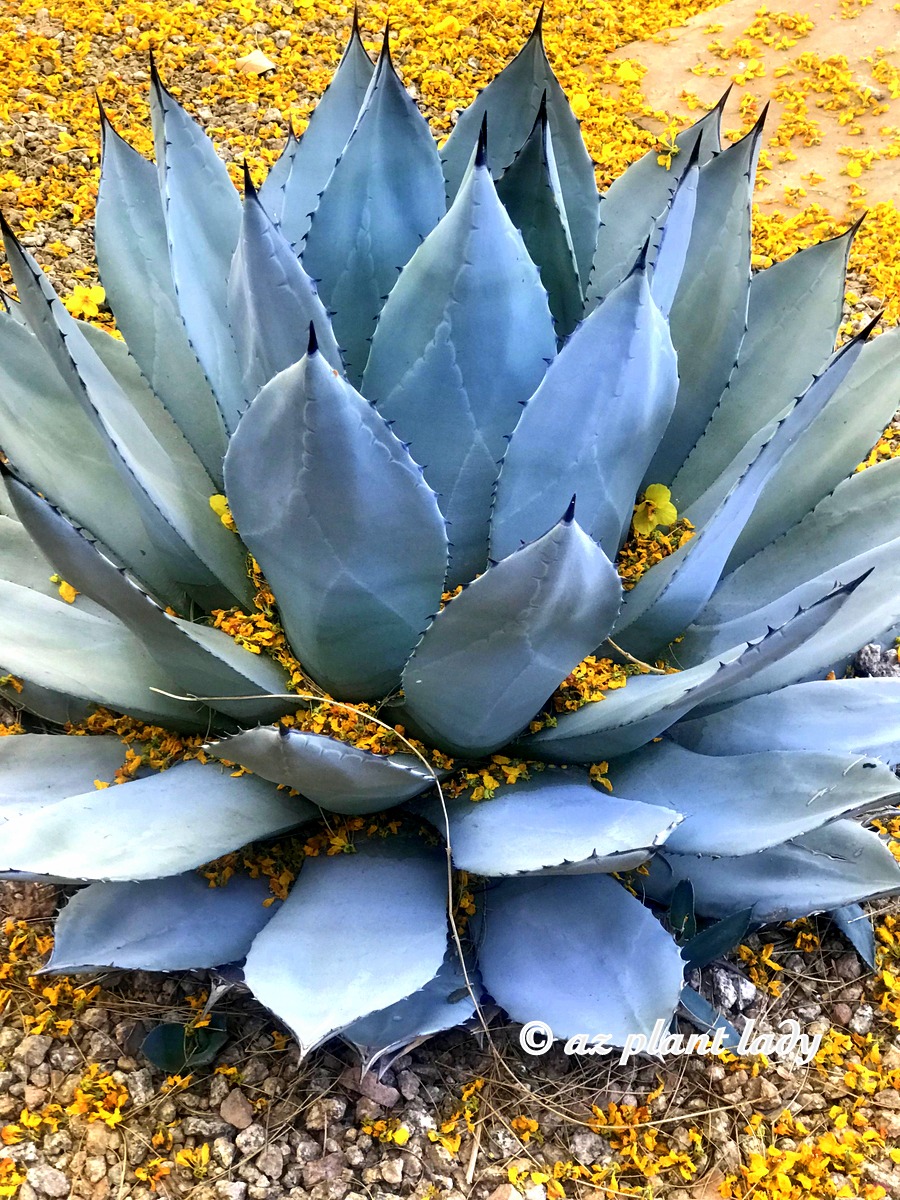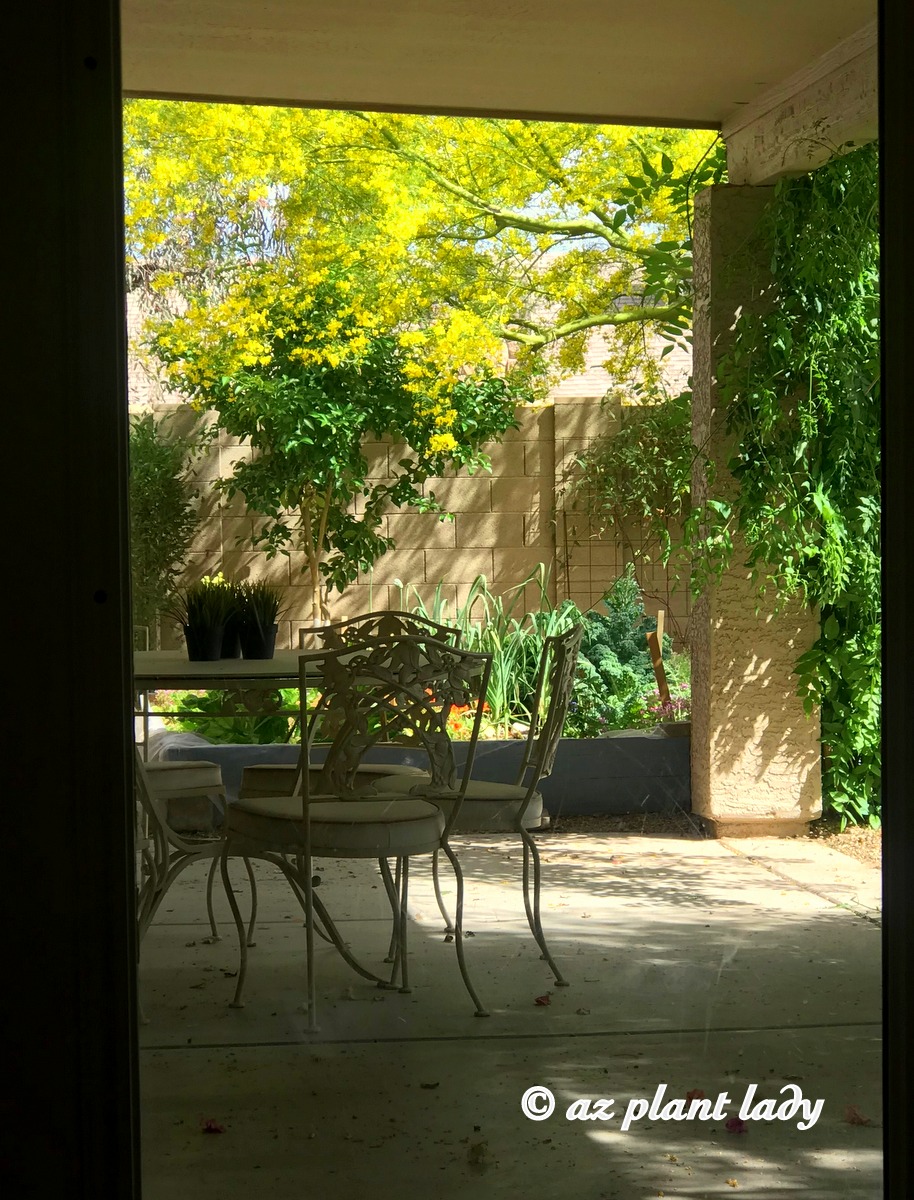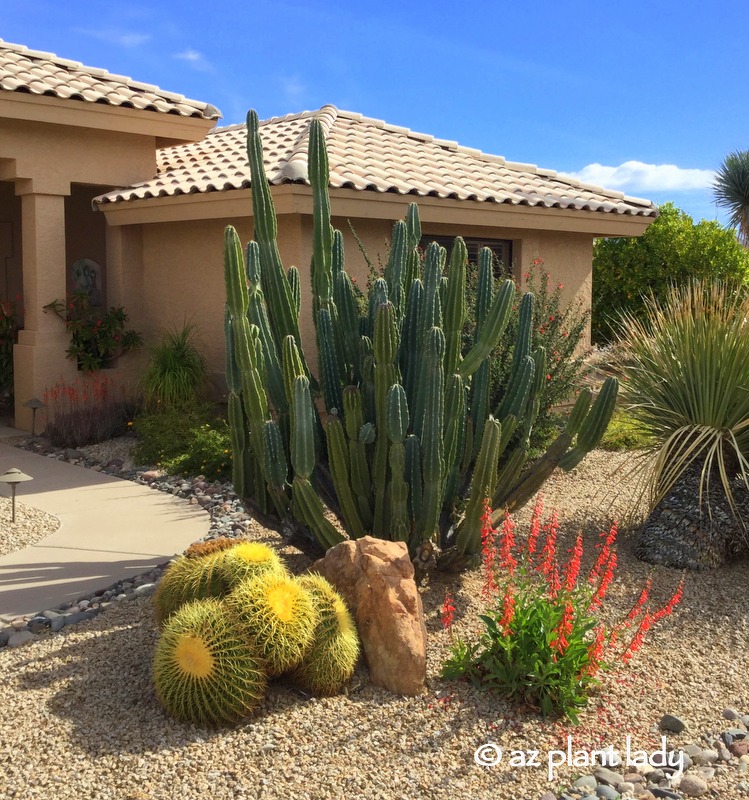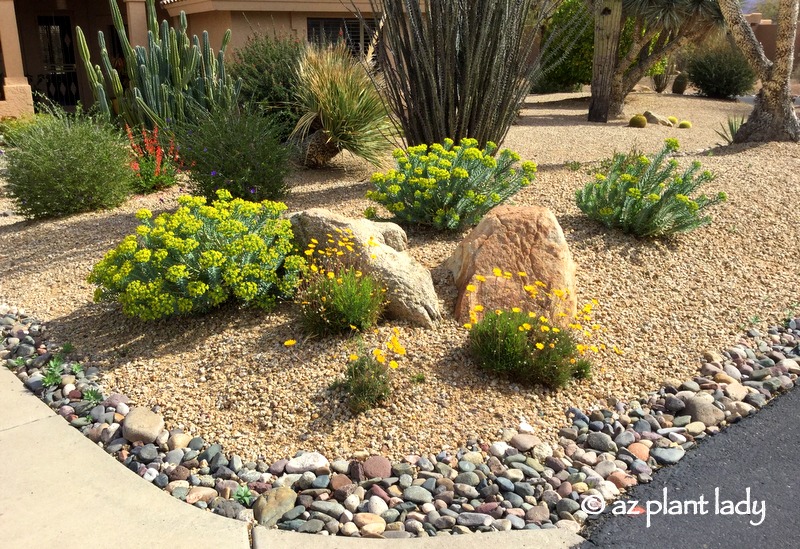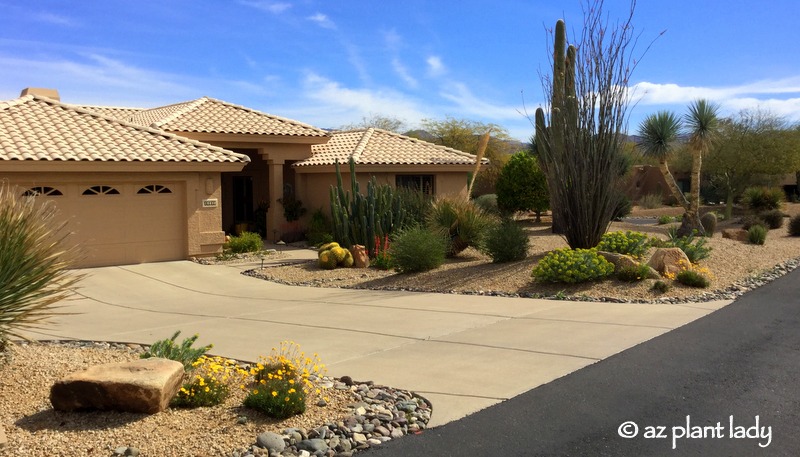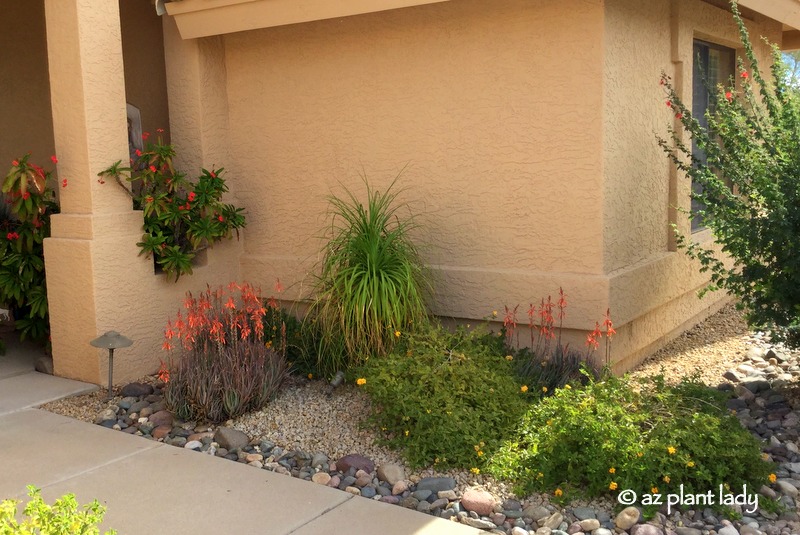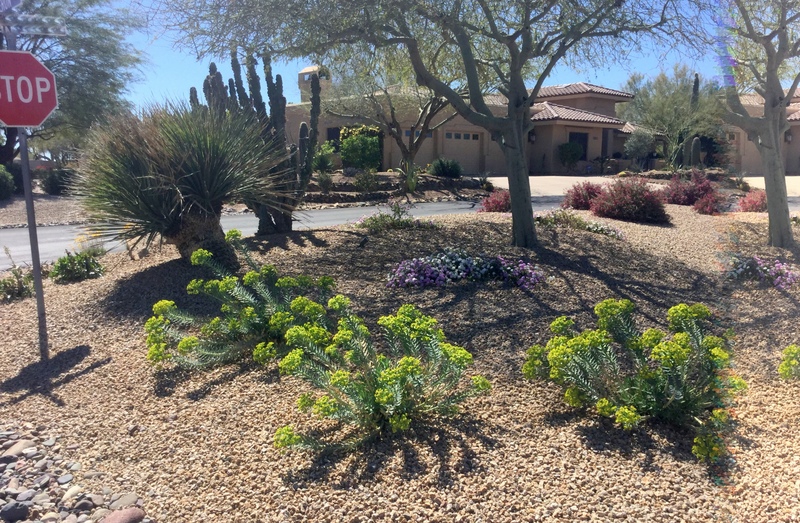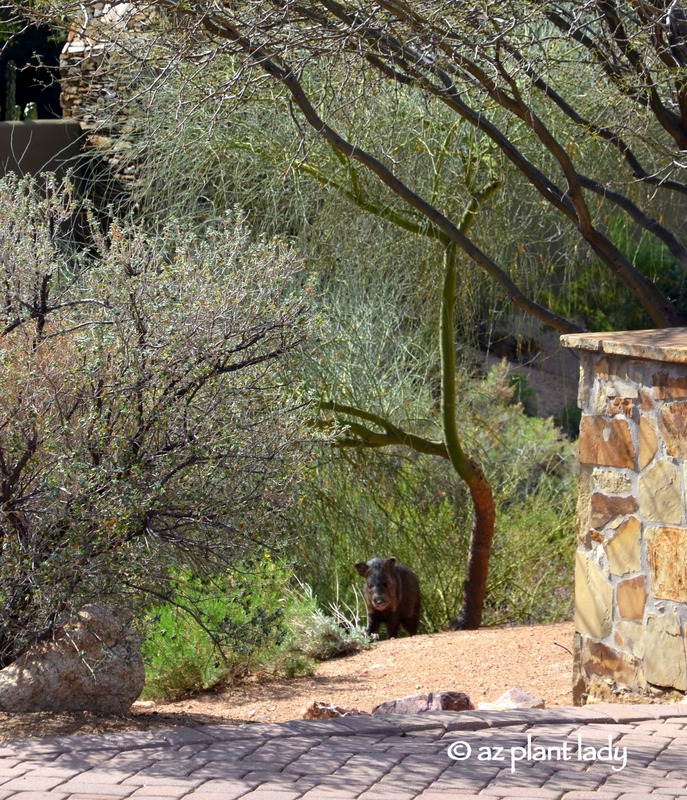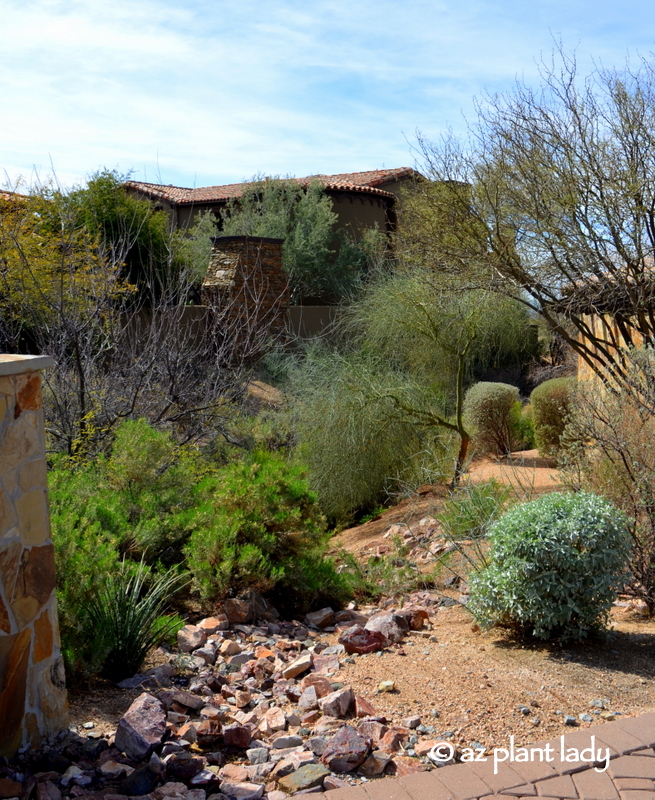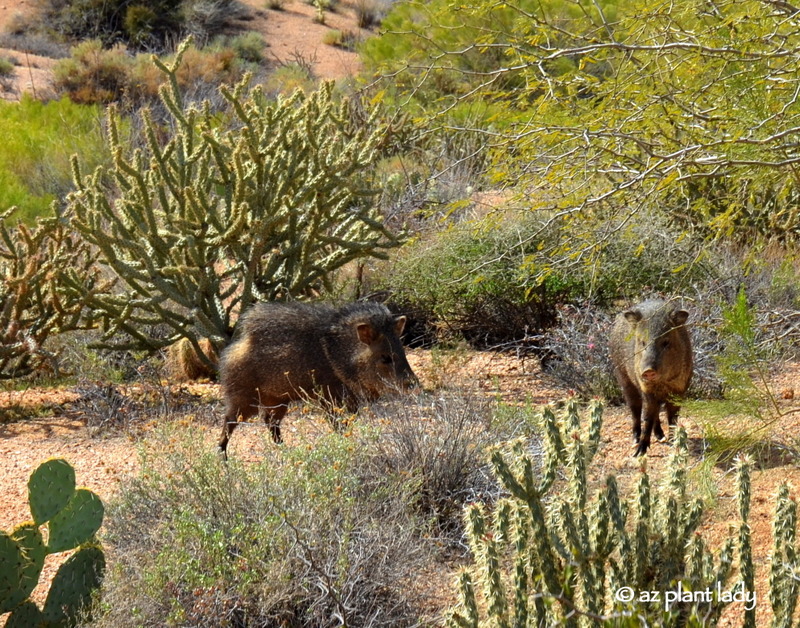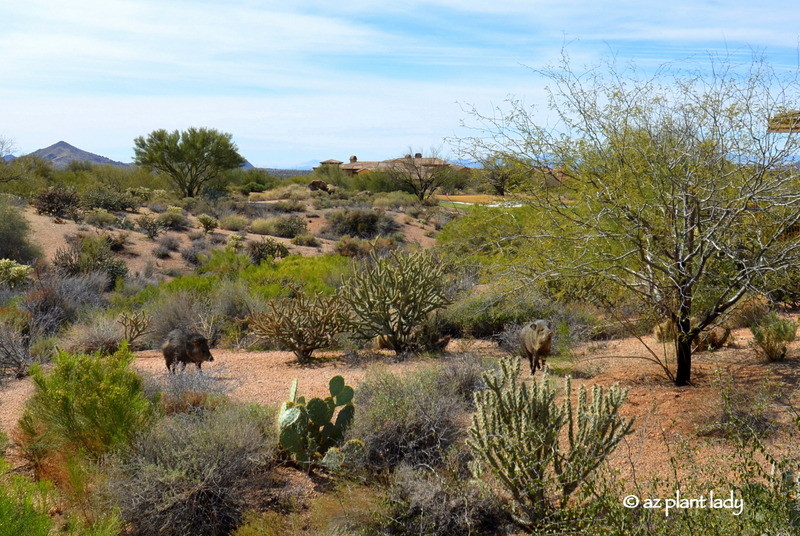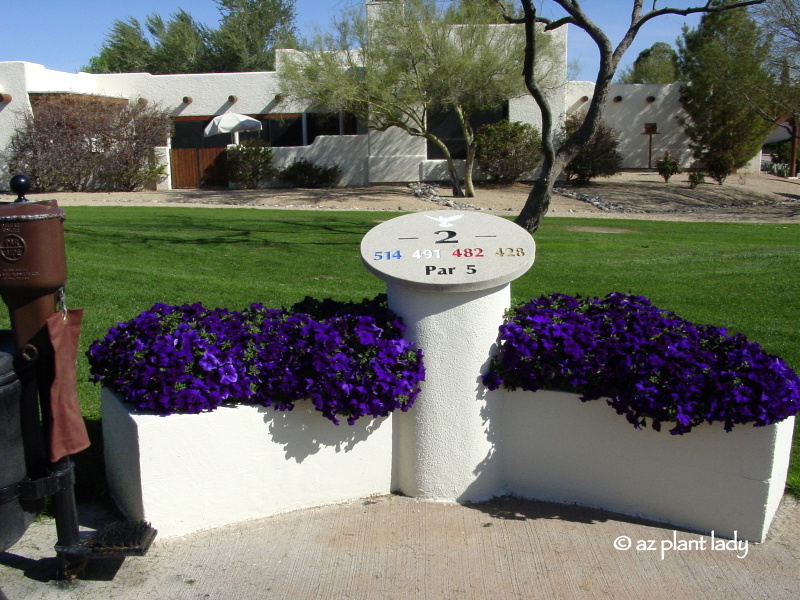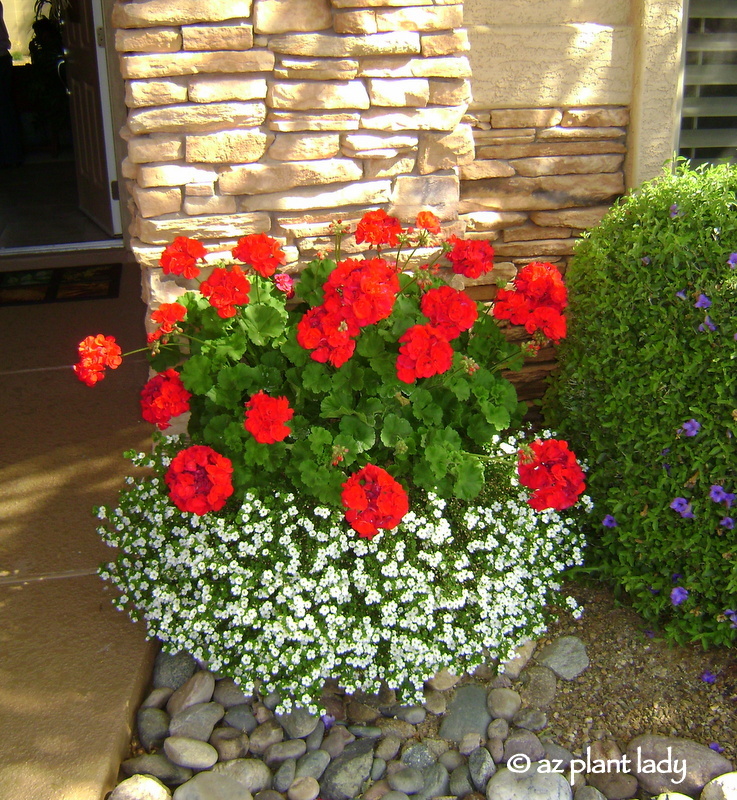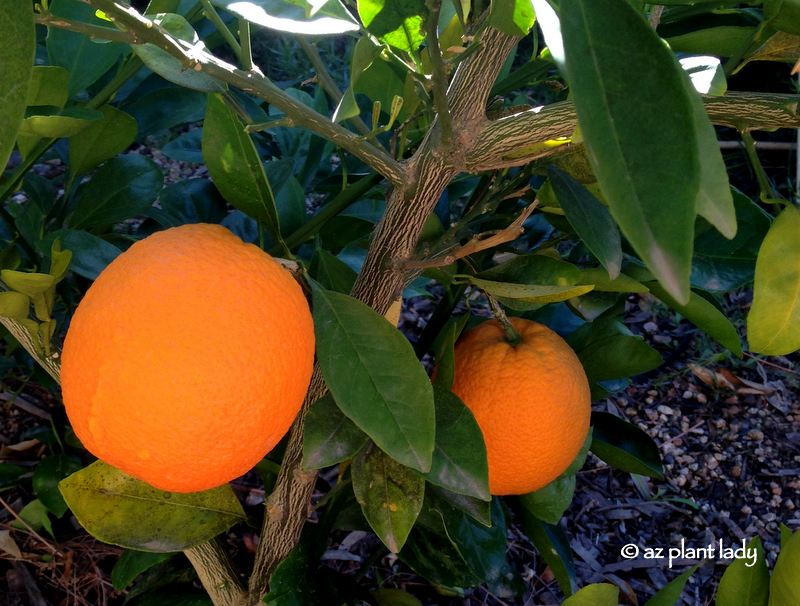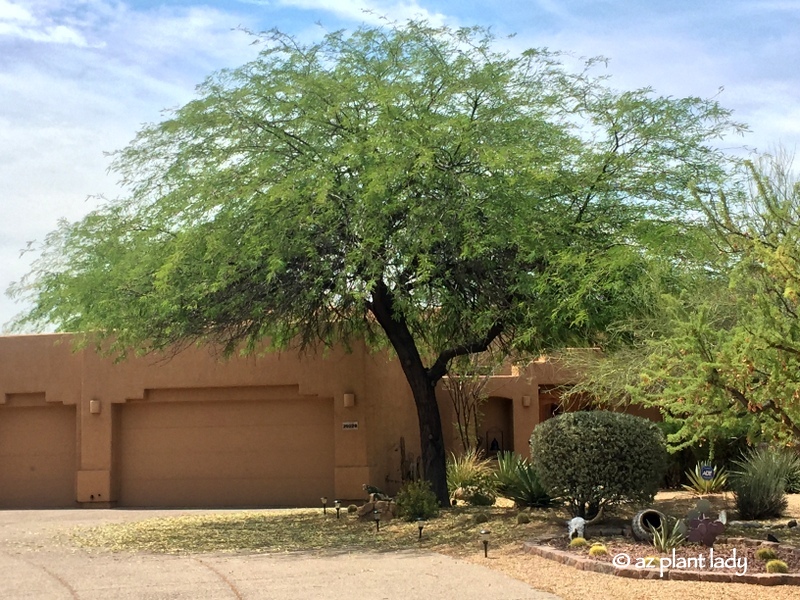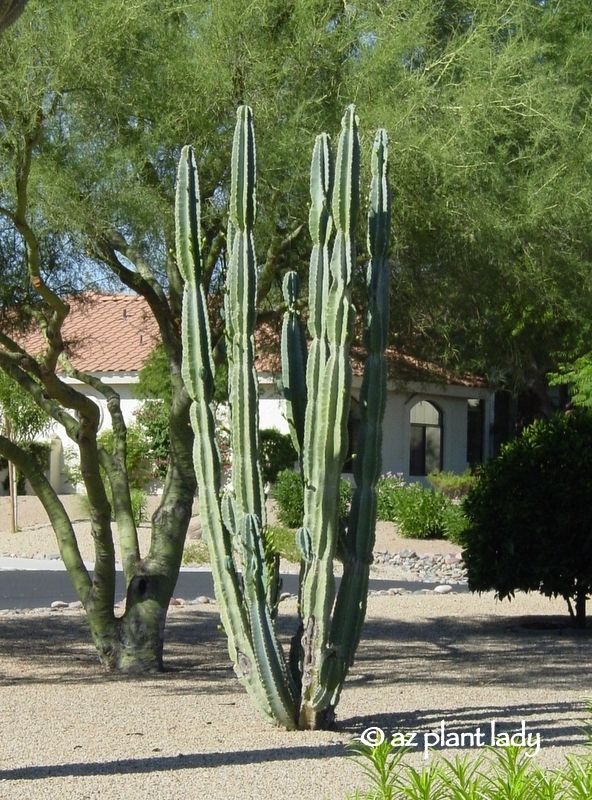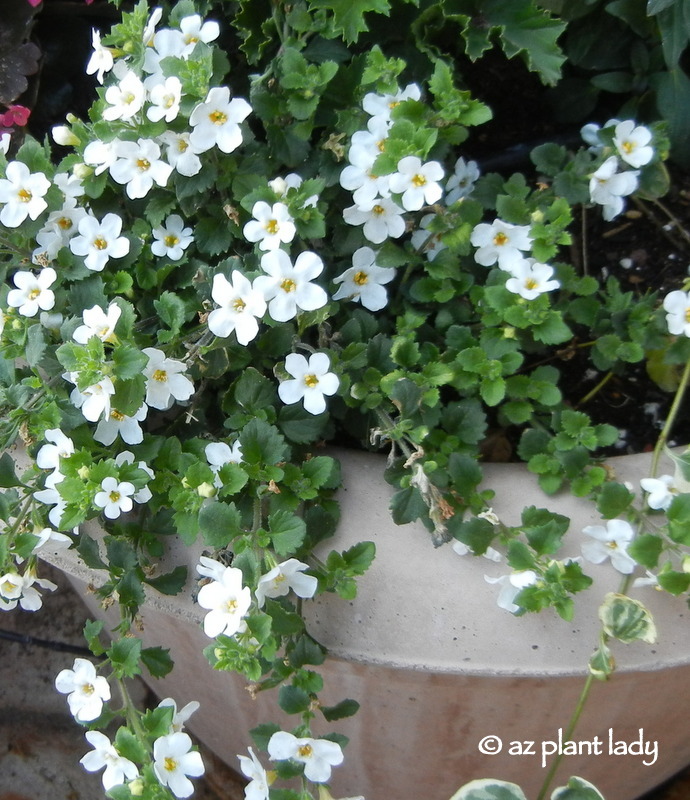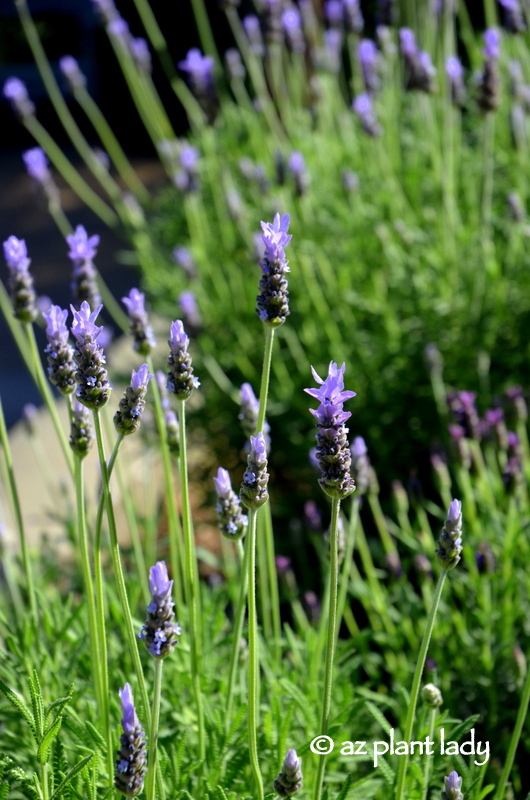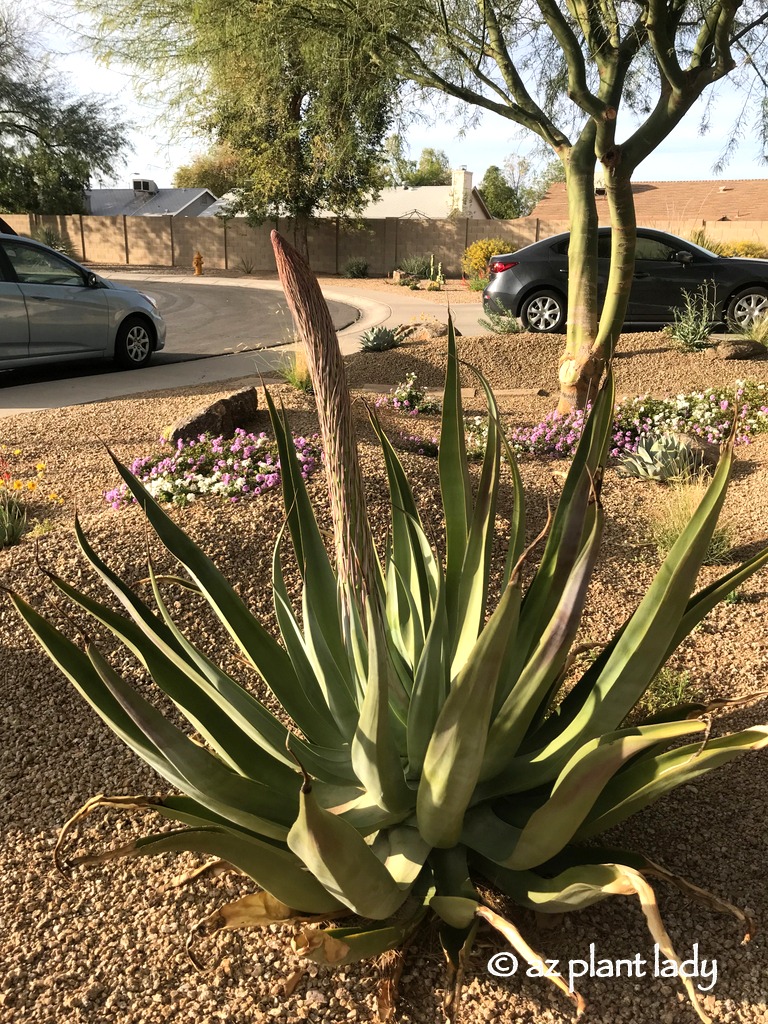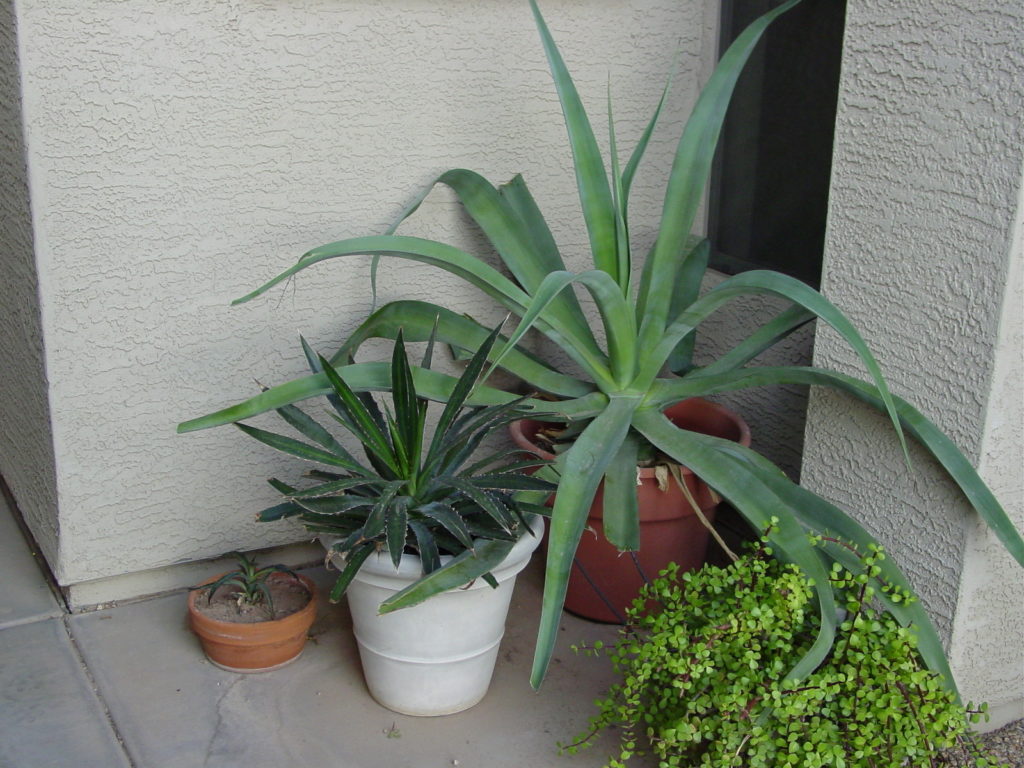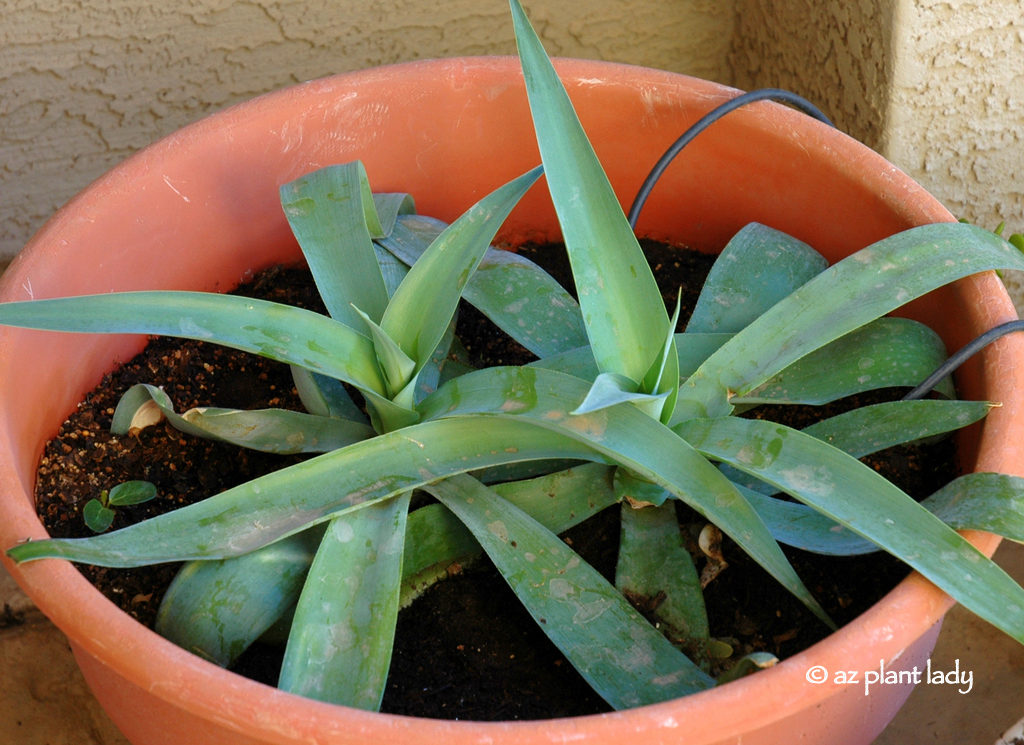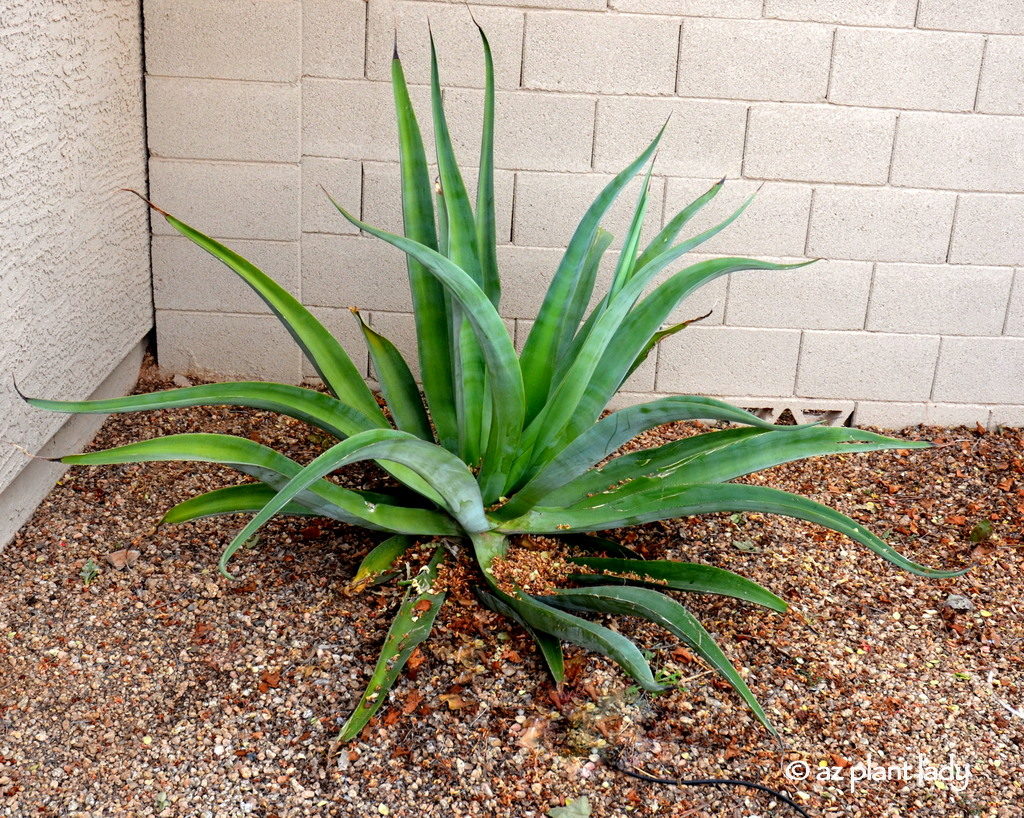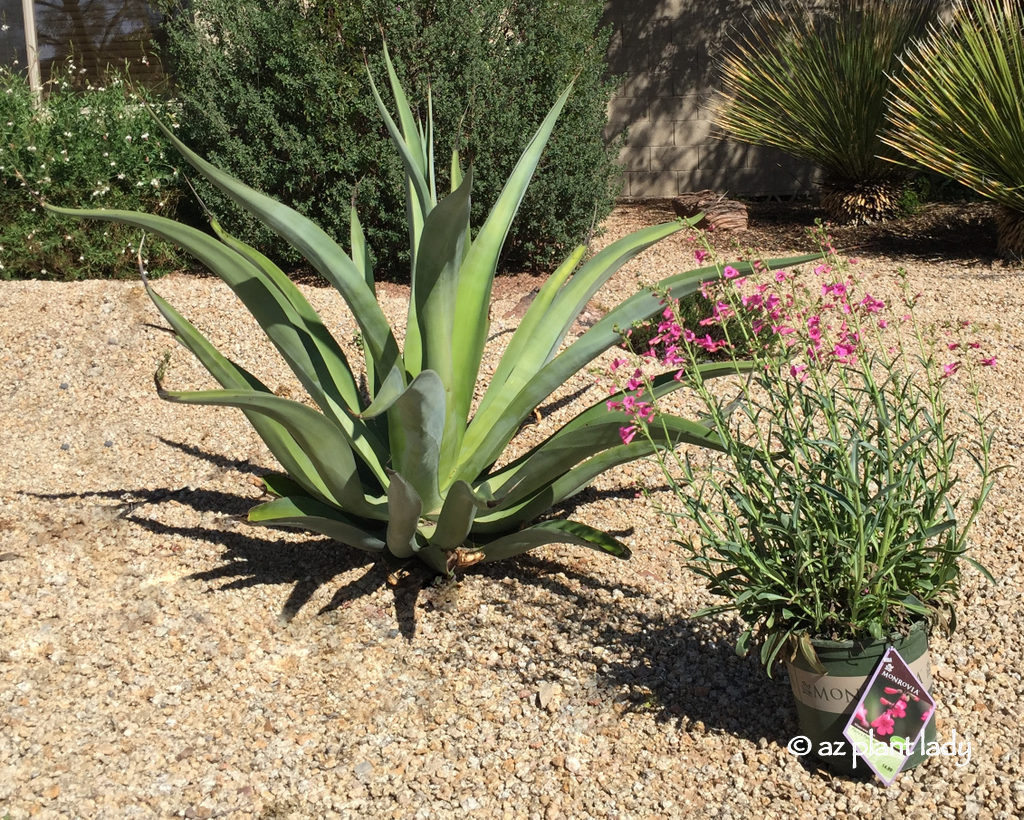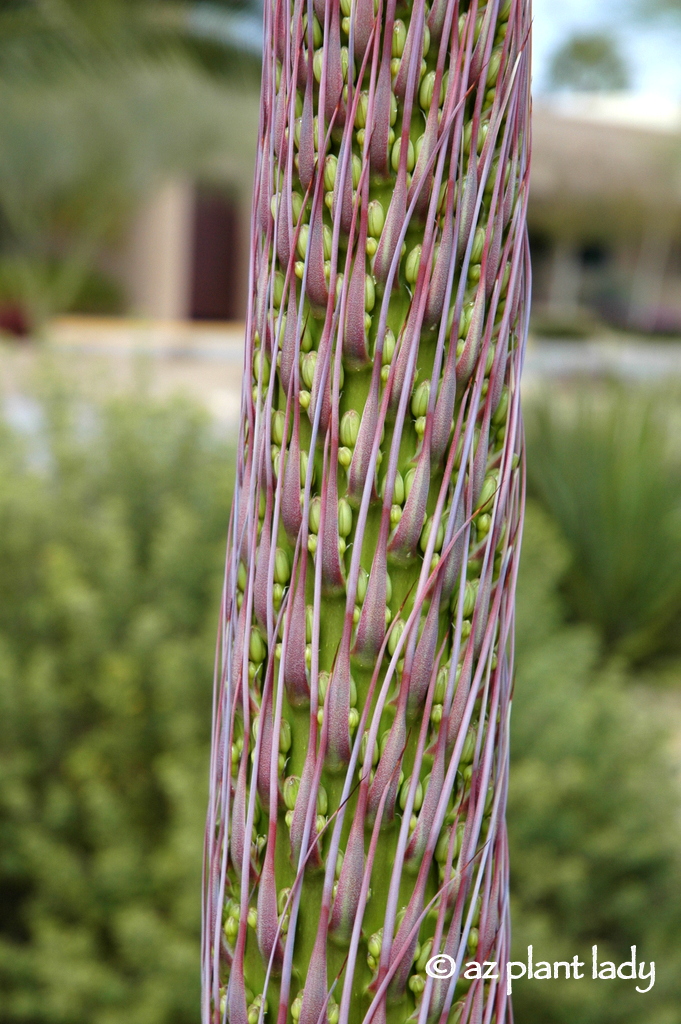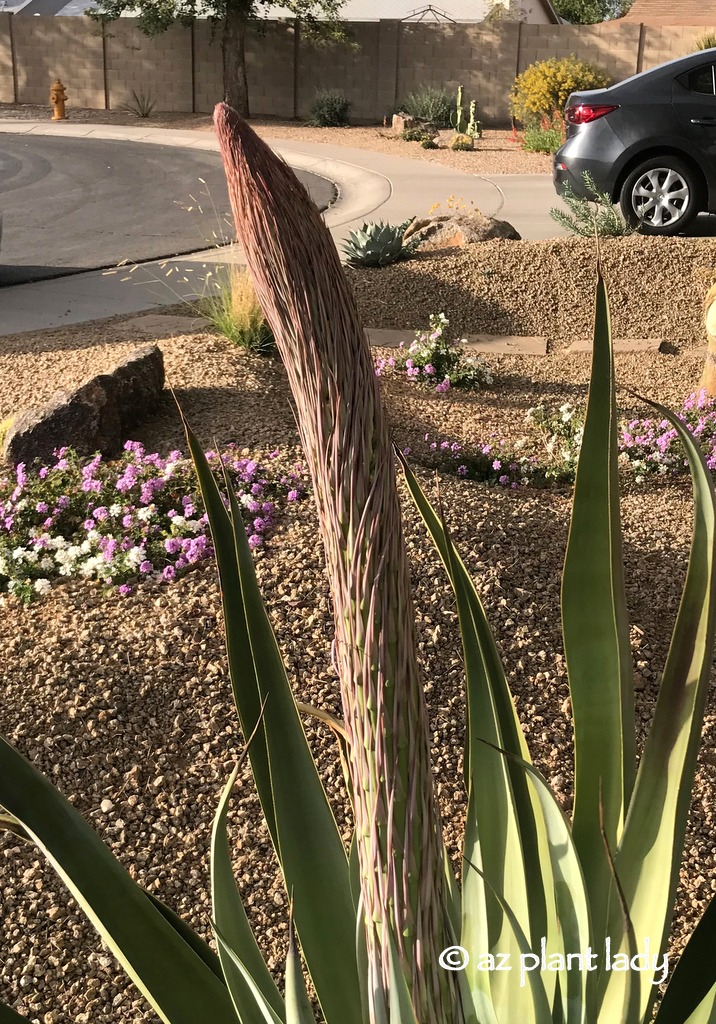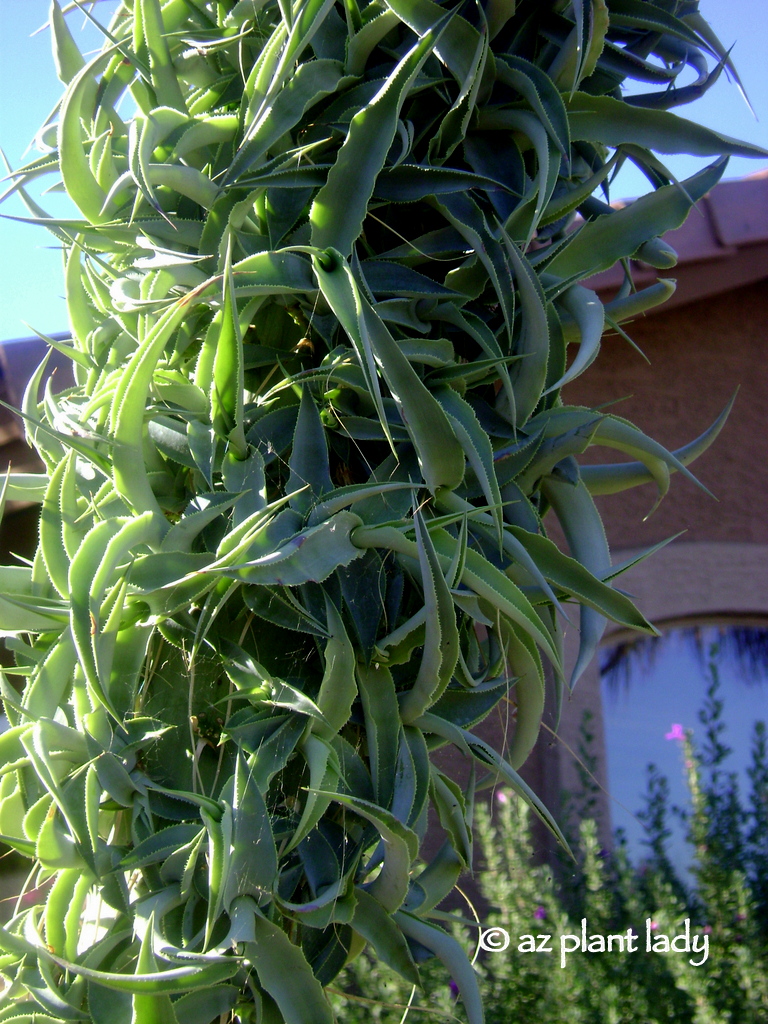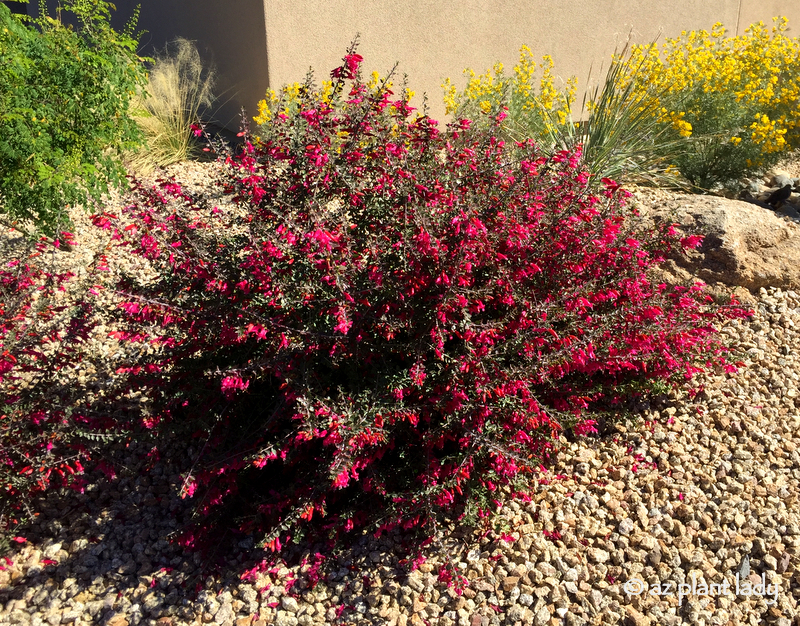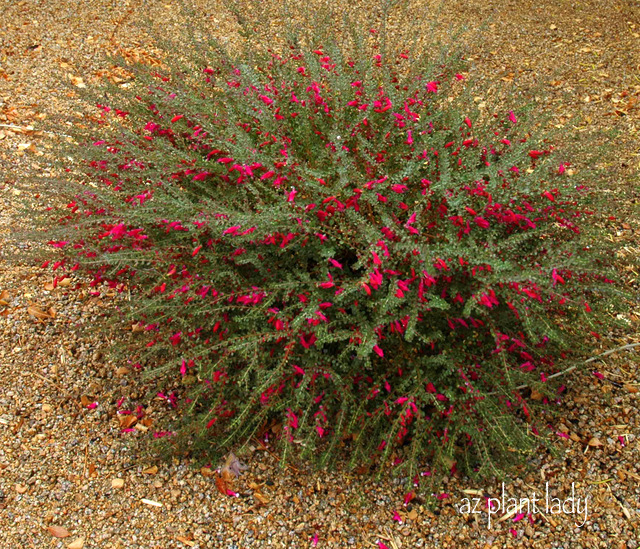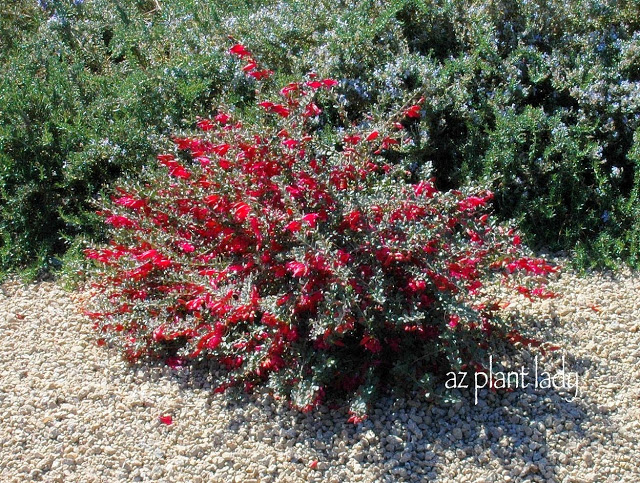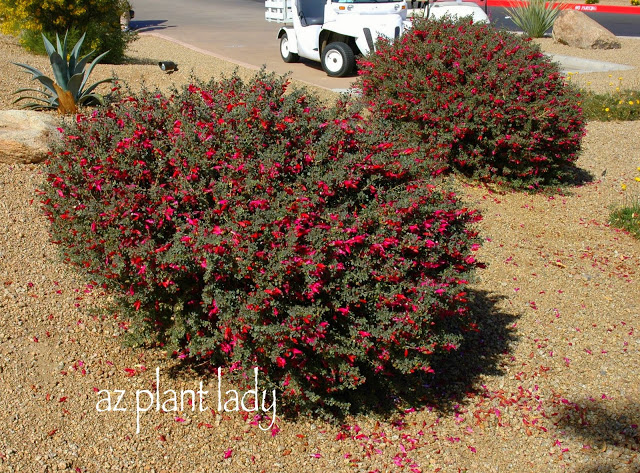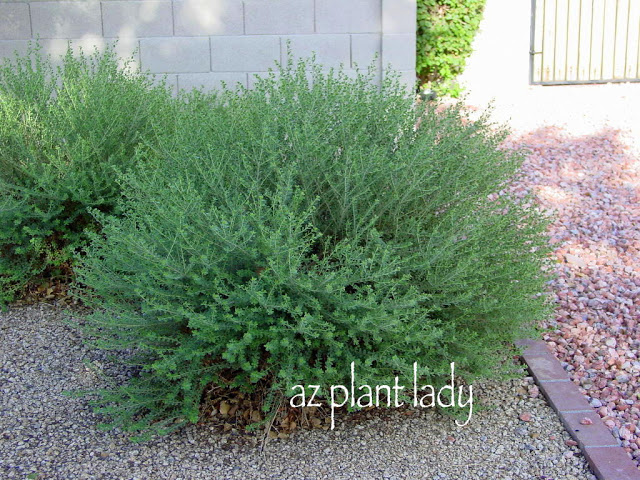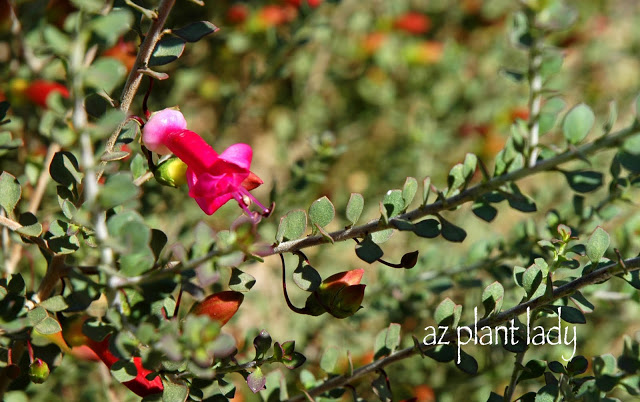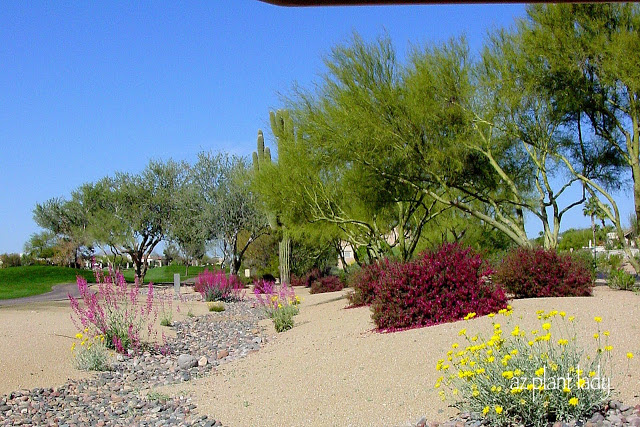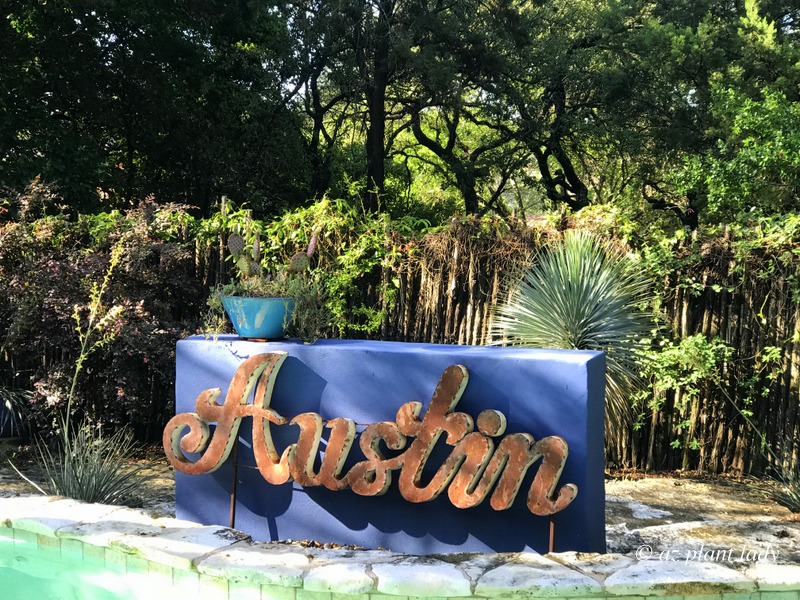
Exploring Pam Penick’s Shady Colorful Garden in Austin, Texas
I like quirky things that are unexpected and outside the daily ‘normalness’ in our lives. That is why I have fallen in love with the city of Austin, Texas, which prides itself on being “weird.” Another reason this Texas capital city appeals to me is their beautiful gardens and rich gardening culture, and my friend, Pam Penick’s shady, colorful garden personifies the uniqueness that is found throughout Austin.
Meeting Pam Penick and Her Unique Garden for Garden Bloggers Fling
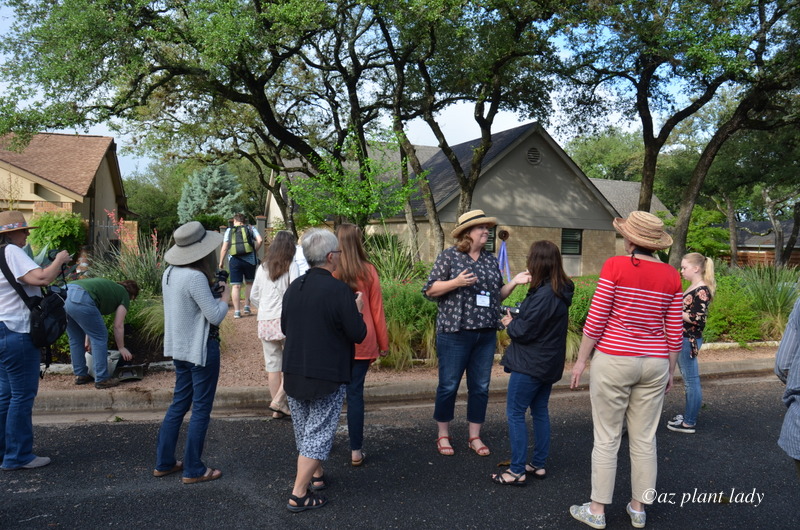
Pam Penick (facing front wearing a hat) greeting garden visitors.
On a recent visit to Austin, I took part in the Garden Bloggers Fling, where garden bloggers from the U.S., Canada, and Great Britain, gather and tour gardens within a particular city. This year’s Fling was held in Austin, and one of the gardens I was most excited to see was Pam’s.
As two long-time bloggers in the Southwest, Pam and I have been friends for several years and I was fortunate to have hosted her in Arizona four years ago, while she was researching for her latest book, “The Water-Saving Garden.” For years, I’ve wanted to visit her garden and now was my chance.
Creative Solutions for Shady Conditions
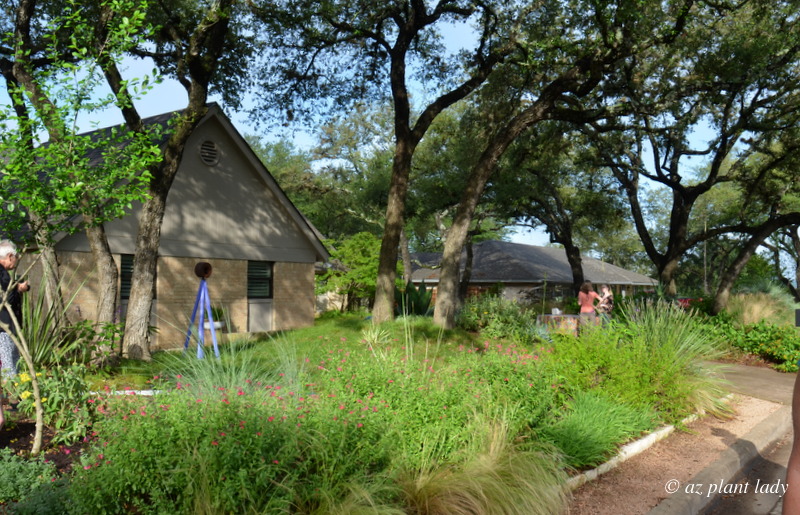
Pam’s garden flourishes underneath the filtered shade of beautiful oak trees. However, the shade does present some challenges in that there aren’t a lot of colorful plants that will flower in shady conditions. But, Pam expertly works around that obstacle, using her unique design style that she describes as mostly contemporary.
Bringing Color to the Shady Landscape
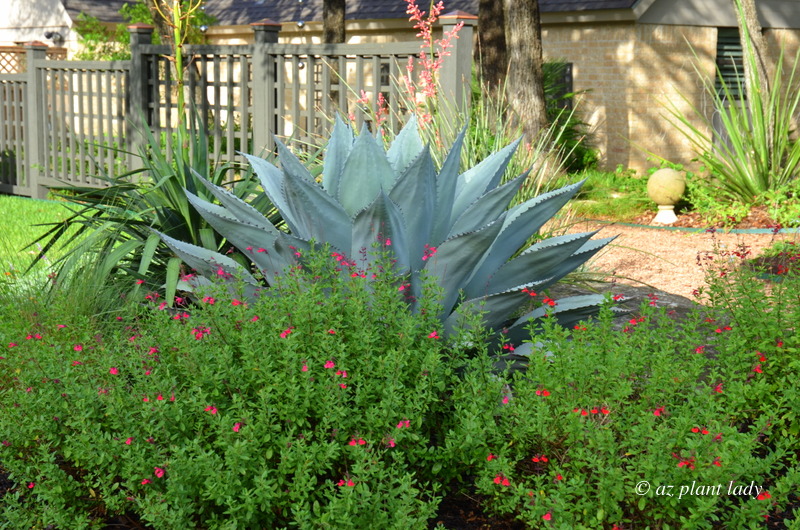
Concentrating flowering plants in the few areas that receive bright sun is one way to add needed color to a shady landscape. Here, the bright colors of this autumn sage (Salvia greggii) contrast beautifully with the blue-gray leaves of a whale’s tongue agave (Agave ovatifolia). While both of these plants flourish in full sun in this Texas garden, they do best with filtered or afternoon shade in the low desert region.
A Splash of Blue in the Garden
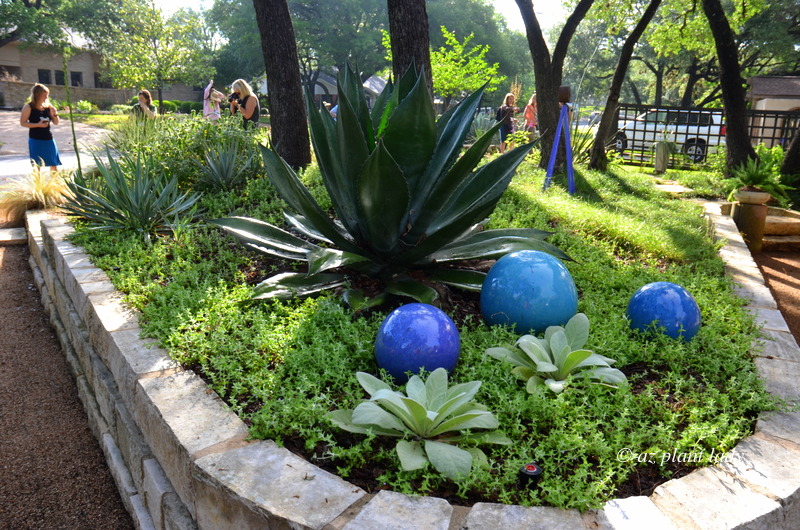
When flowering plants are absent, we introduce texture by utilizing spiky agave and yucca plants. We incorporate elements of color into the garden through the inclusion of garden art, exemplified by these blue balls.
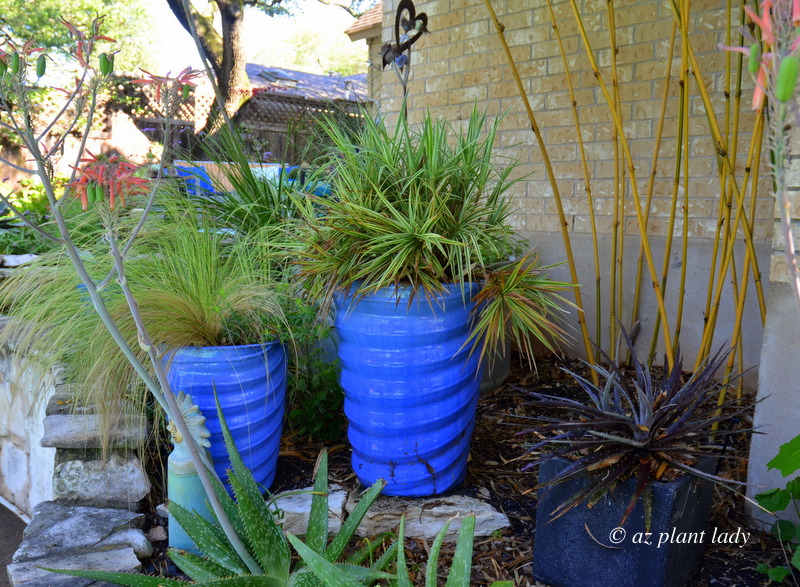
I love blue pots, and I’ve found a kindred spirit in Pam, who has them scattered throughout her landscape.
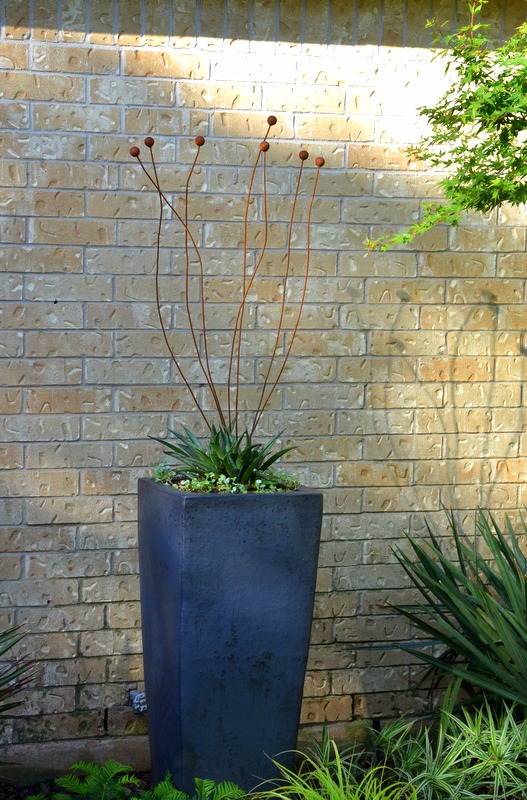
As you walk through the garden, you need to pay attention as Pam adds lovely detail in unexpected places, like this rusted garden art.
Unique Garden Trends: Pocket Planters
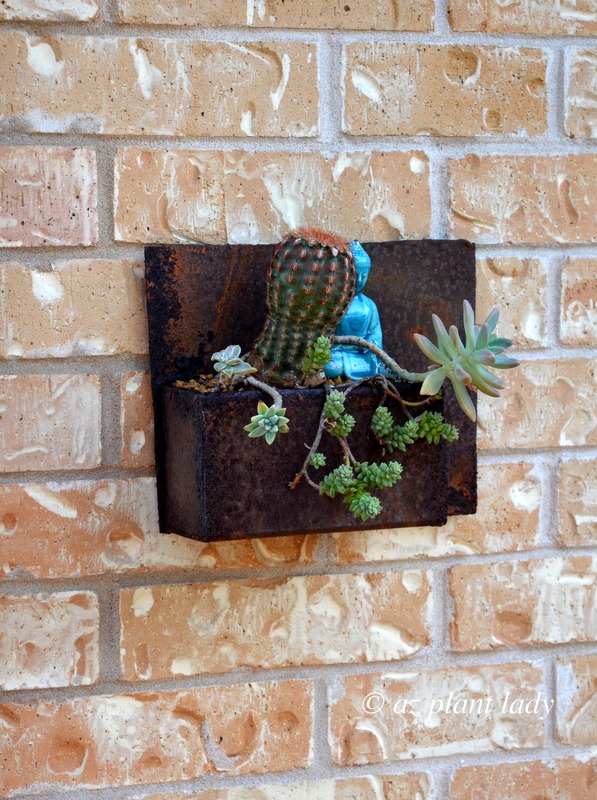
There are garden trends that are unique to specific areas of the country, and I found several of what I call, ‘pocket planters’ hanging on walls. Right at eye-level, it is easy to explore the tiny detail of these small containers.
Bamboo Muhly and Dyckia: A Colorful Composition
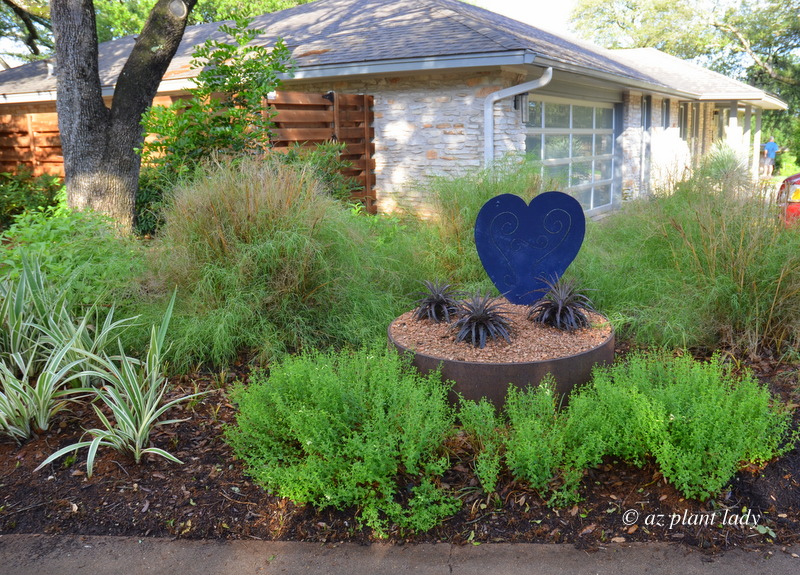
Walking along the driveway, toward the backyard, the soft shape of bamboo muhly (Muhlenbergia dumosa) adds a beautiful blue backdrop, and in front, a container filled with Dyckia and a blue heart adds interest.
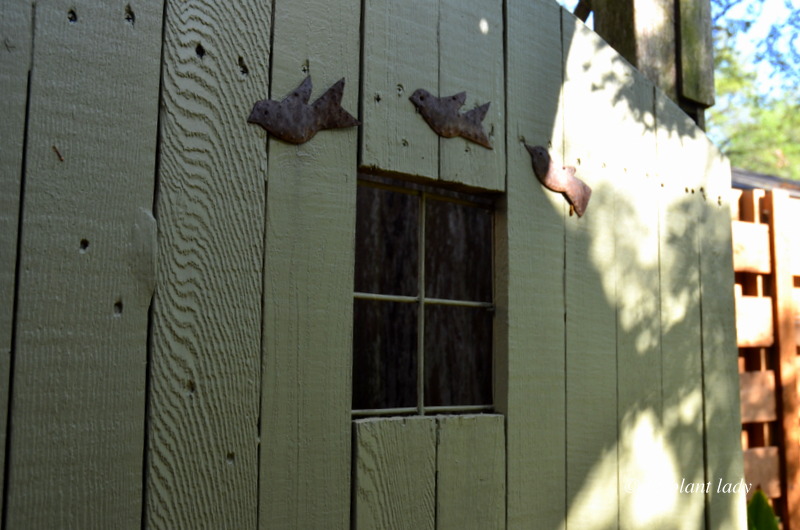
A sage green garden gate led the way into the backyard.
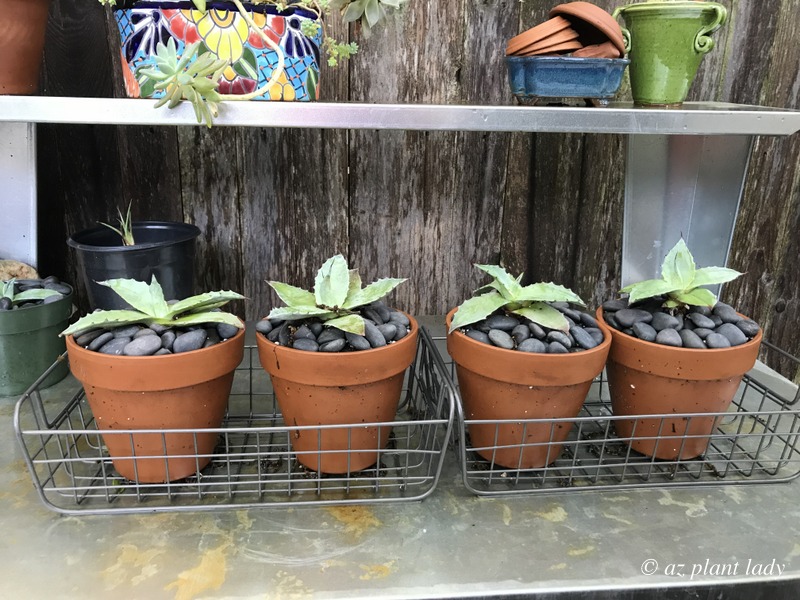
A potting bench sits along the wall in the side garden where four “Moby Jr.” whale’s tongue agave are planted. They come from Pam’s original “Moby” agave – I have one of the babies growing in my front garden.
Succulent Beauty in Masonry Blocks
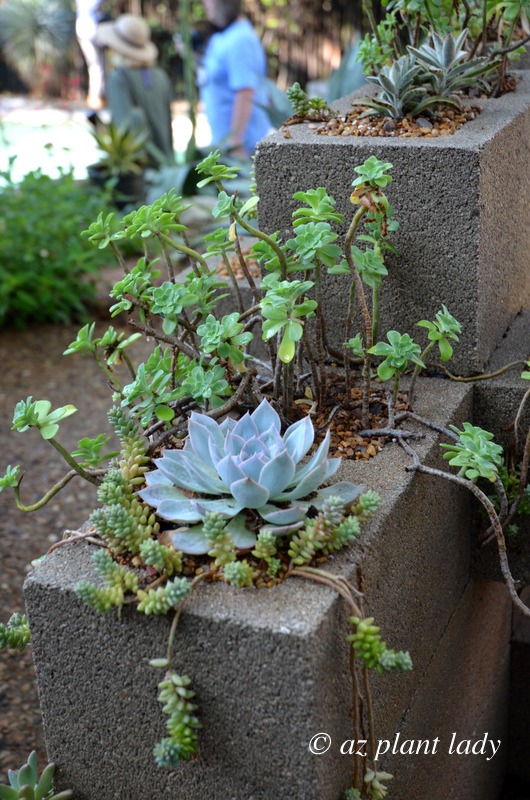
Masonry blocks are artfully arranged into a low wall. Each block is rich with a variety of succulents.
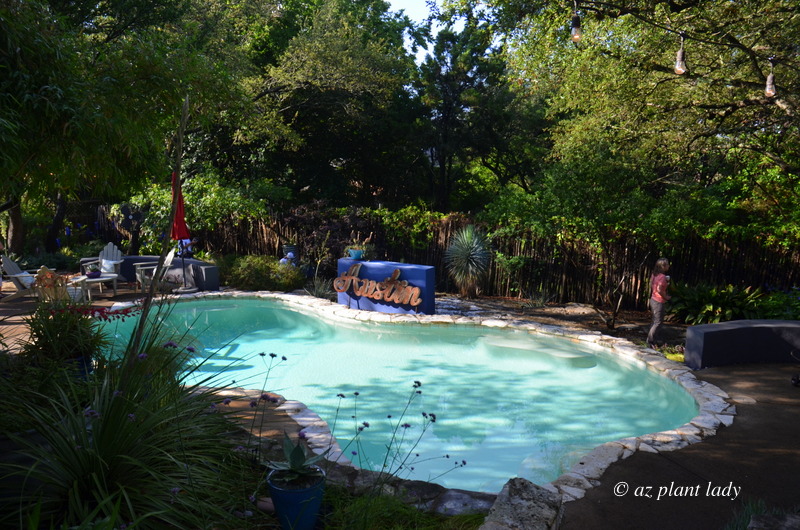
The garden sits on a slope. This provides a lovely view from the upper elevation. I love the blue wall that adds a welcome splash of color. It also adds a touch of whimsy with the “Austin” sign.
Shadows and Planters: Adding Colorful Elements
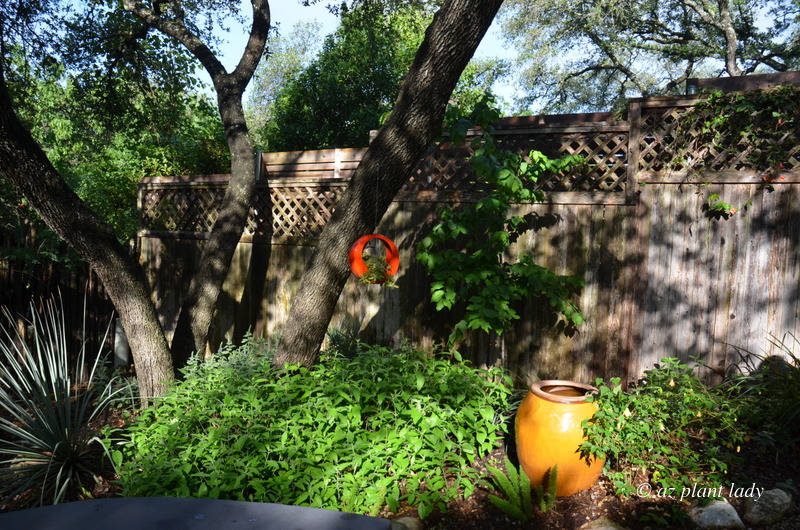
The shadows from an oak tree make delightful patterns along the wall while planters add a nice color element.
Blue Bottle Trees and Unique Ornaments
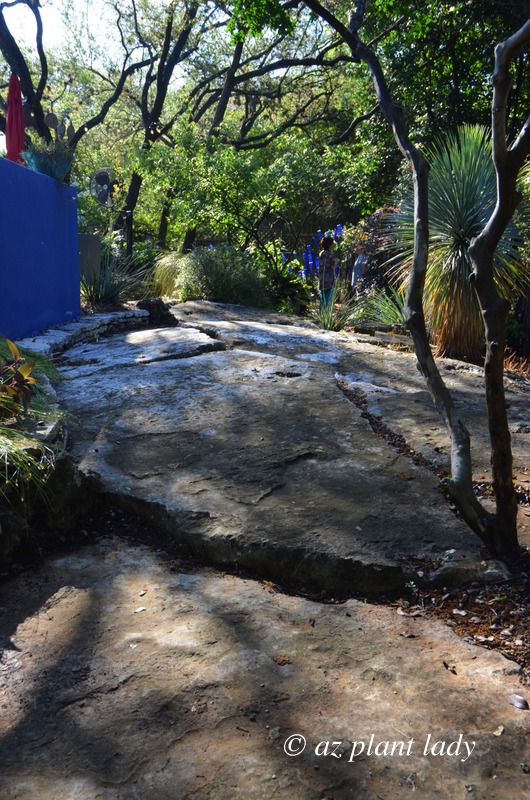
Gardening in Austin isn’t for wimps. They have to deal with thin soils that lie atop rock. This is quite evident along the back of the garden.
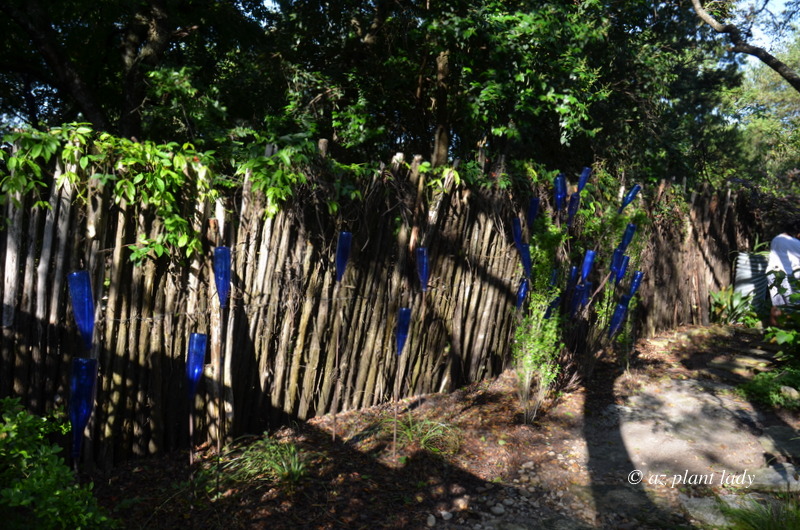
Blue bottle trees are a popular garden ornament throughout the South as well as other areas of the U.S. Here; they serve the same purpose as a flowering vine would.
A Whimsical Touch: Octopus Pots
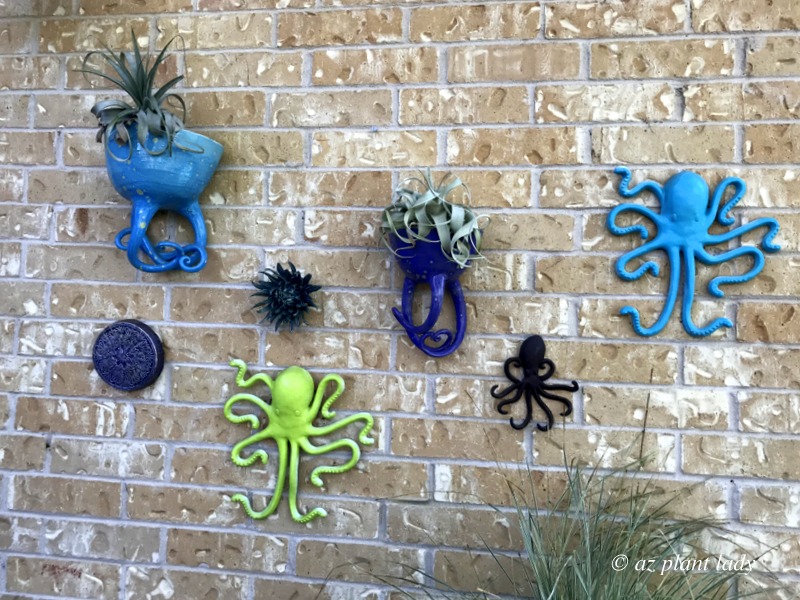
As I got ready to leave, I walked along the deck that overlooked the pool. Here there are more examples of Pam’s unique garden style. Honestly, I can say that I’ve never seen octopus pots anywhere in my garden travels, until now.
I had a wonderful time exploring this shady oasis and the innovative ways that Pam has introduced colorful elements. Check out her blog, Digging, which is one of my favorites.
Garden Inspiration: Southwest Style

